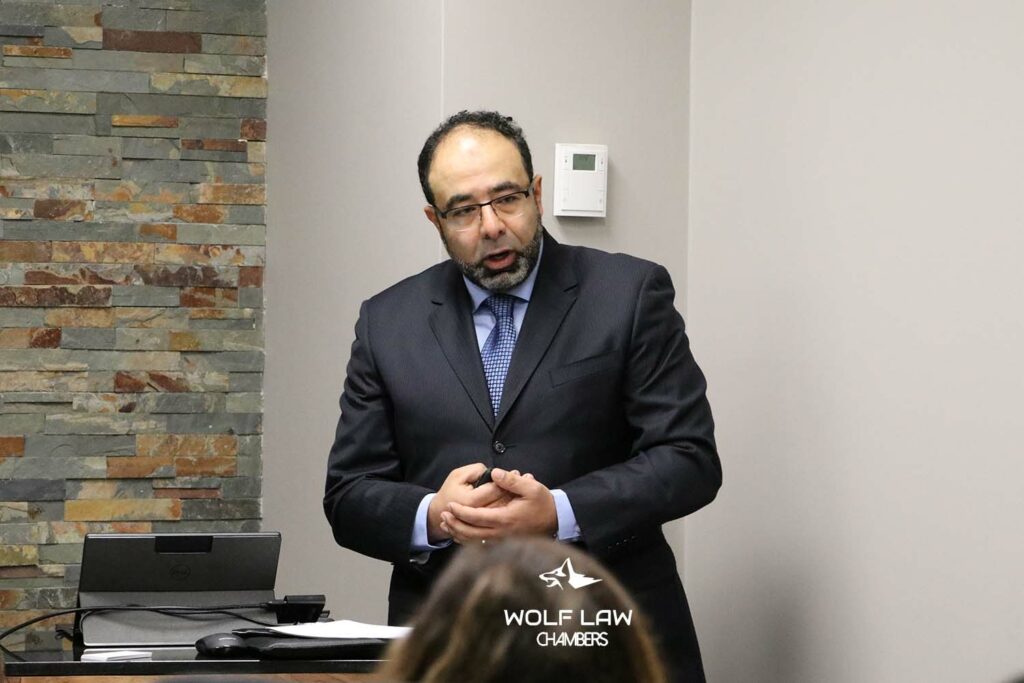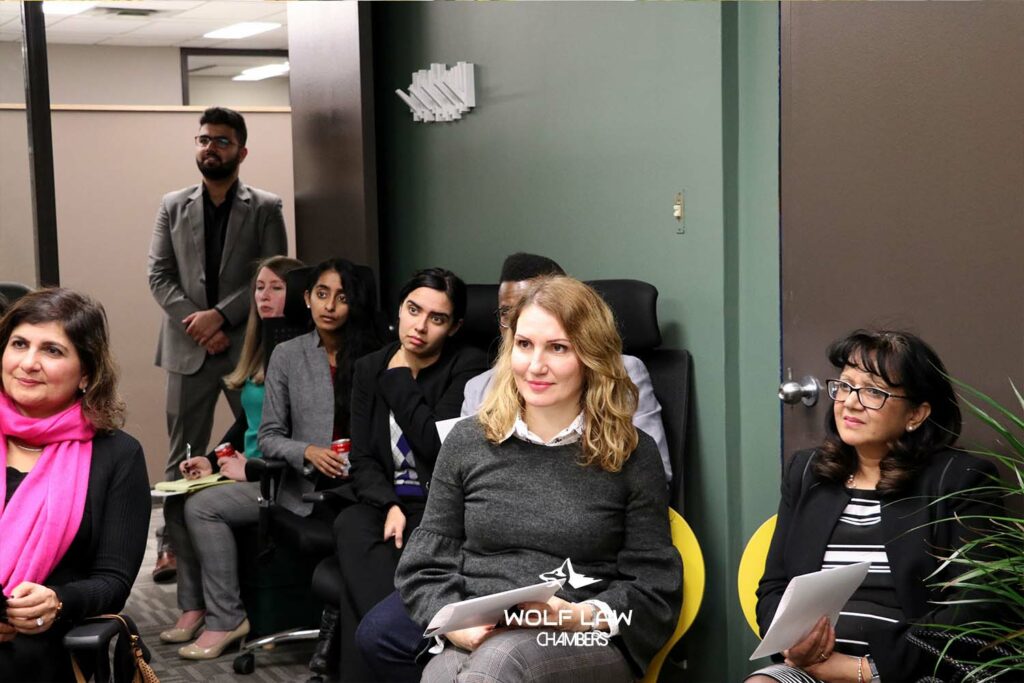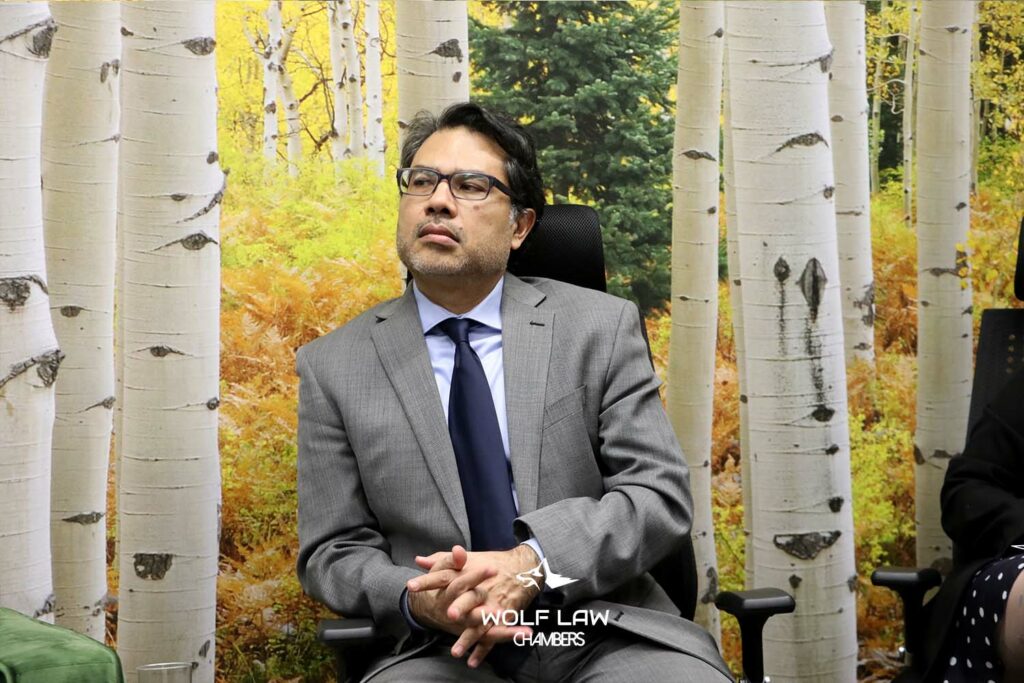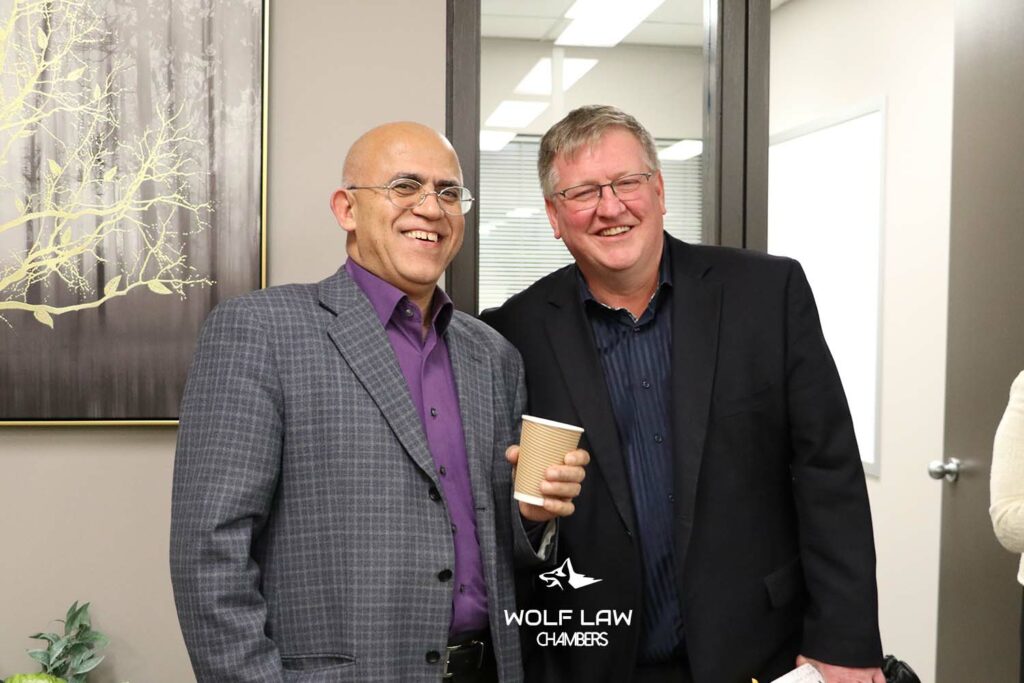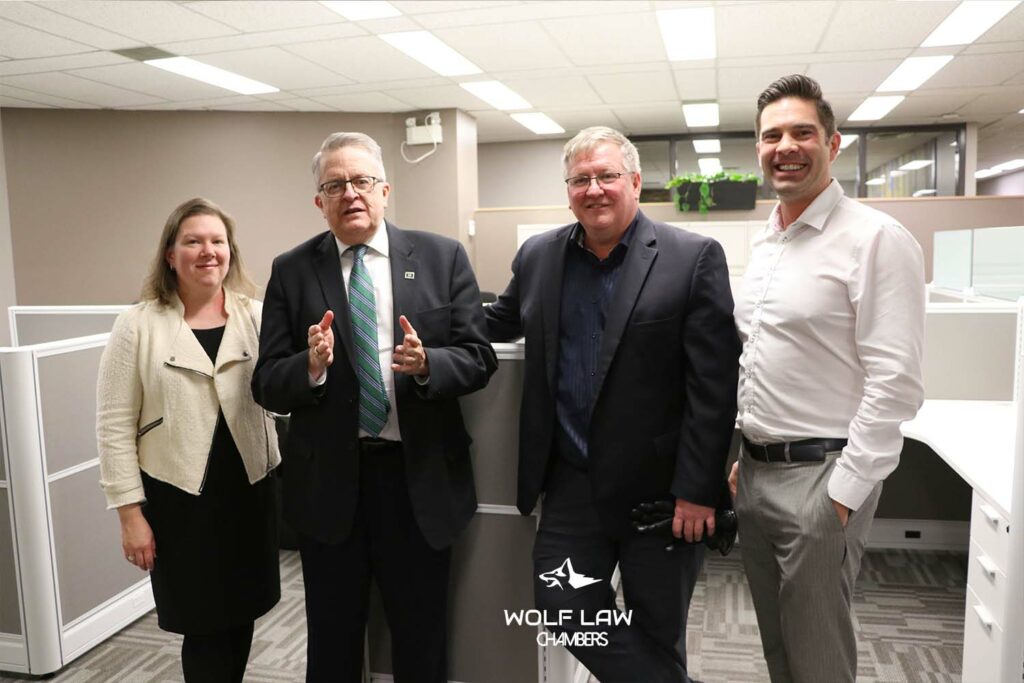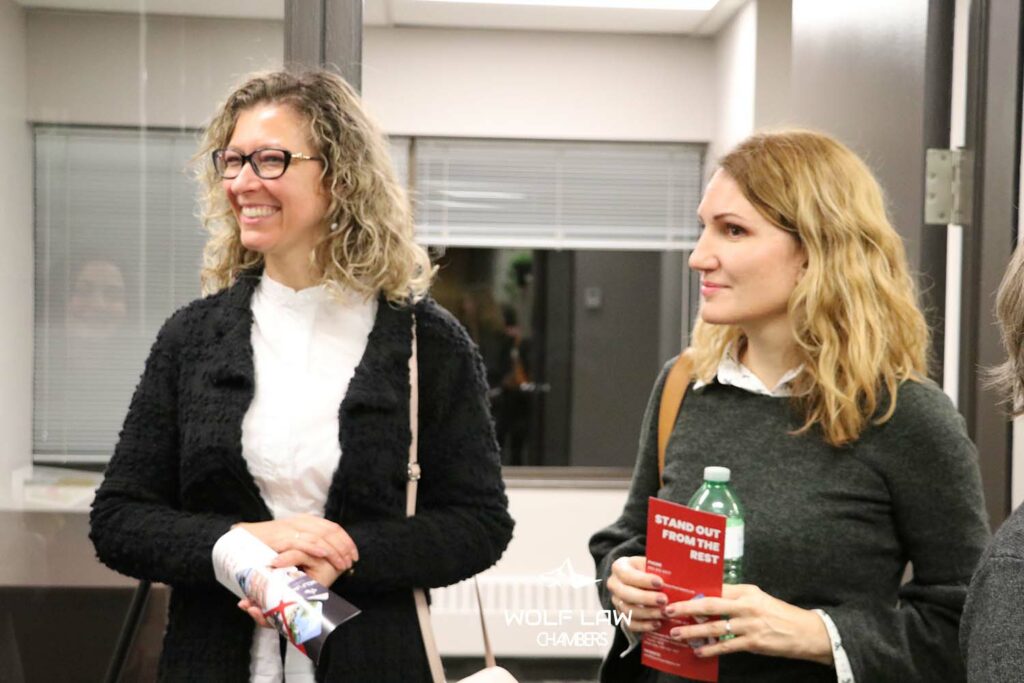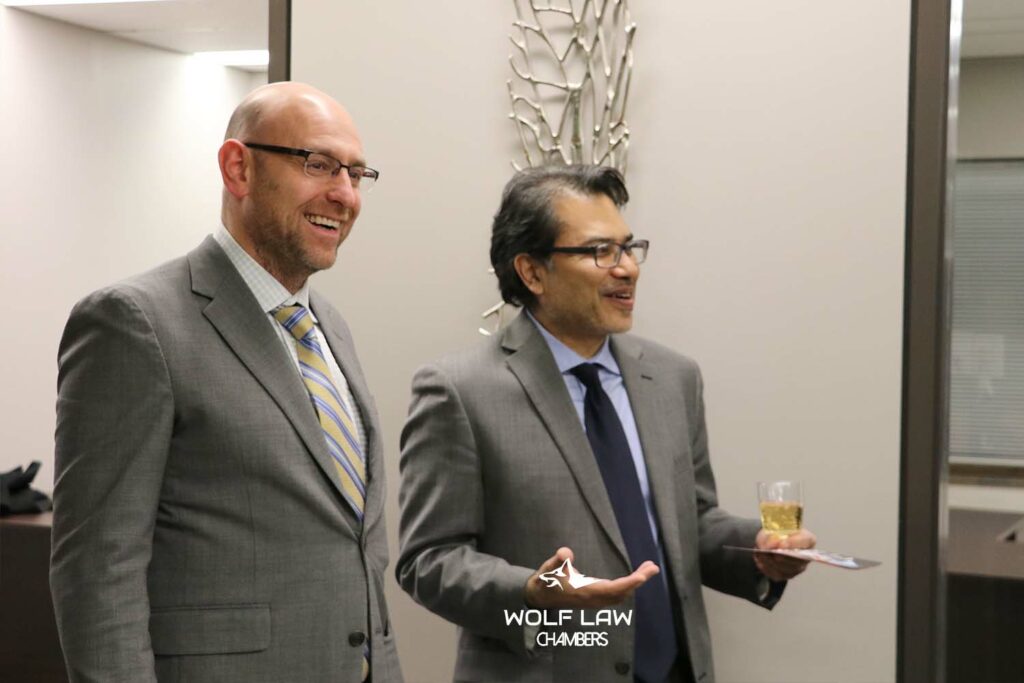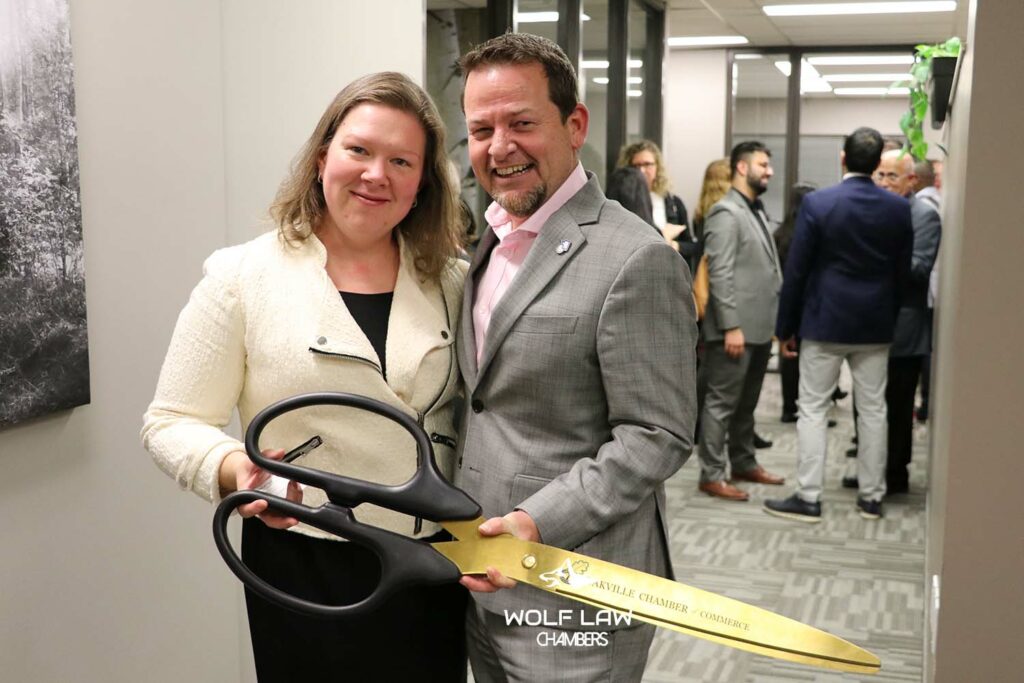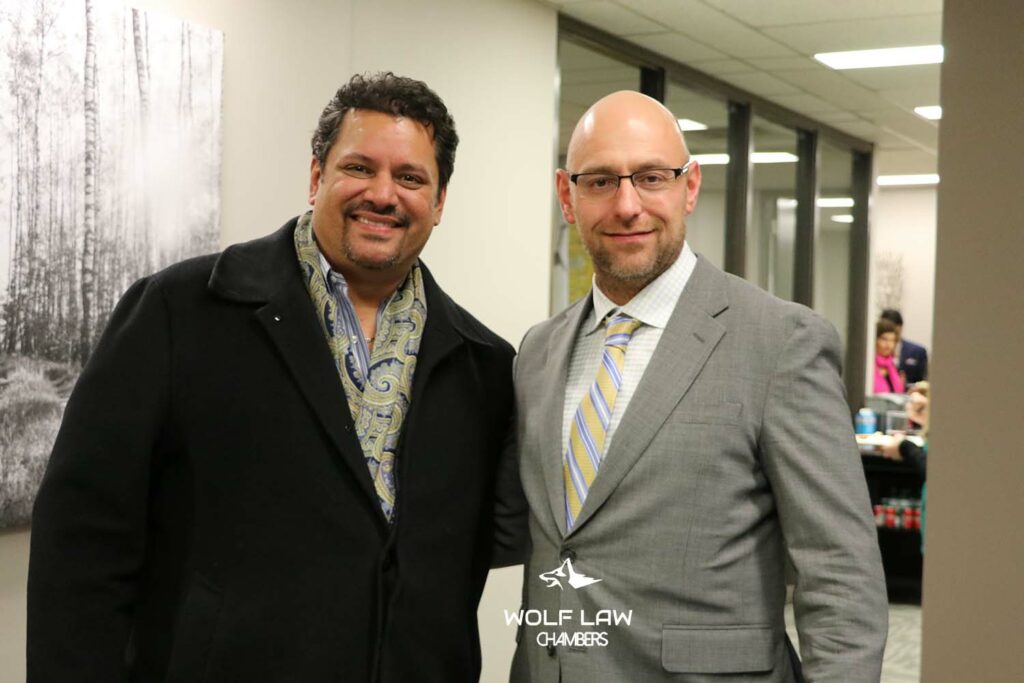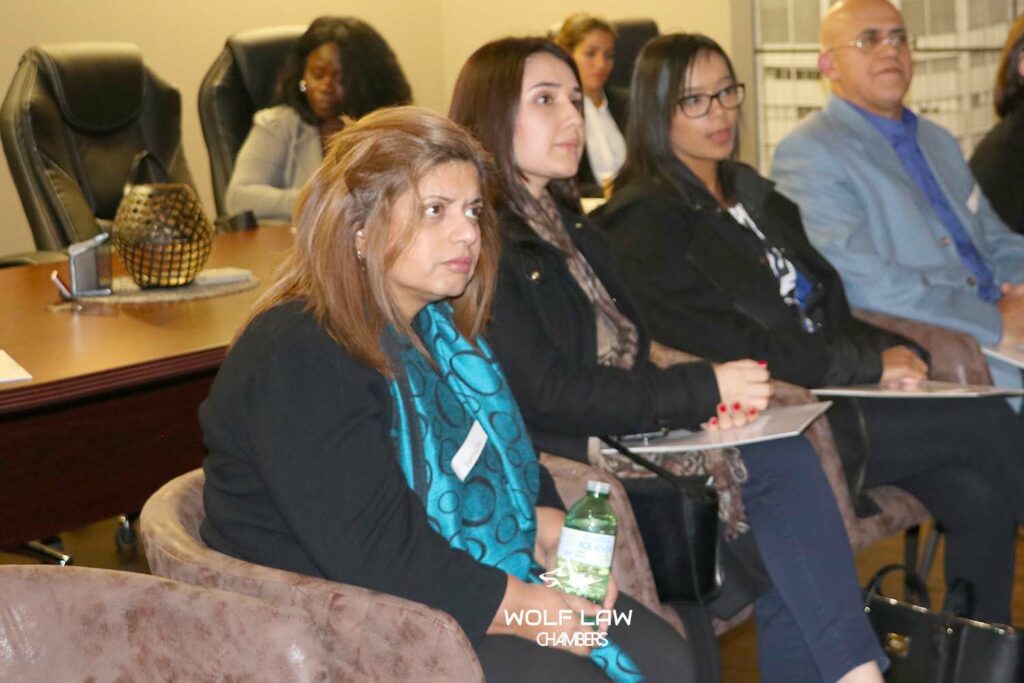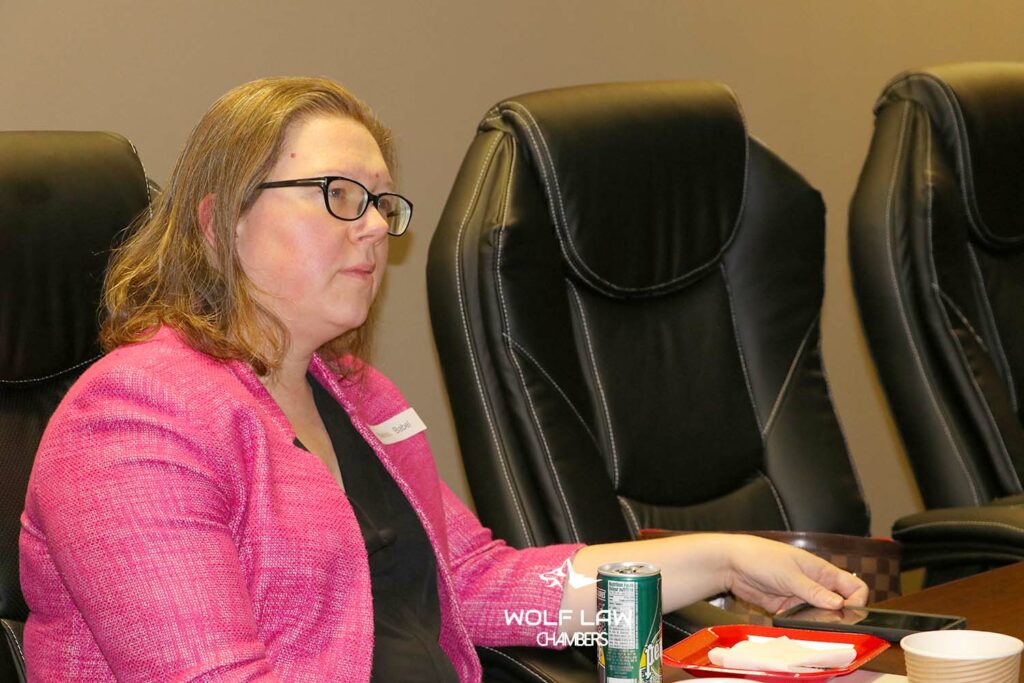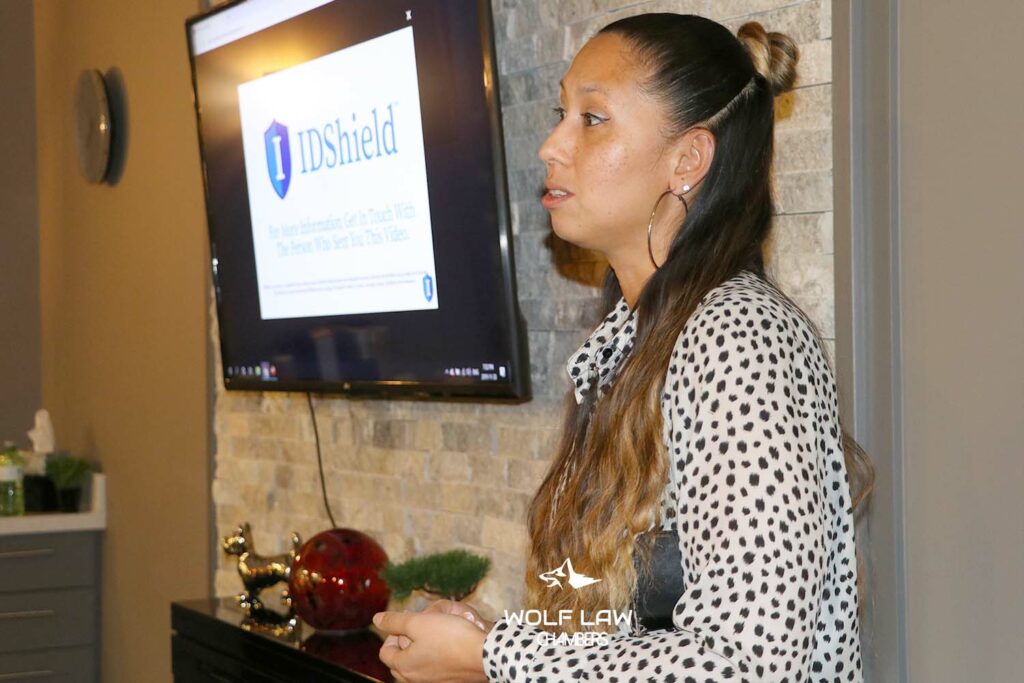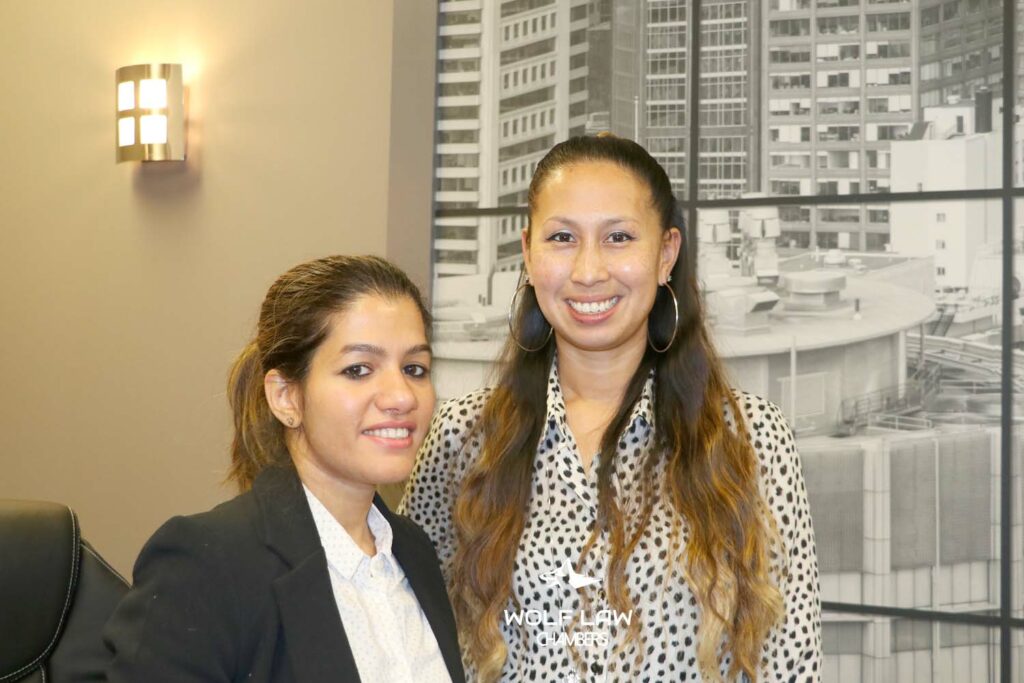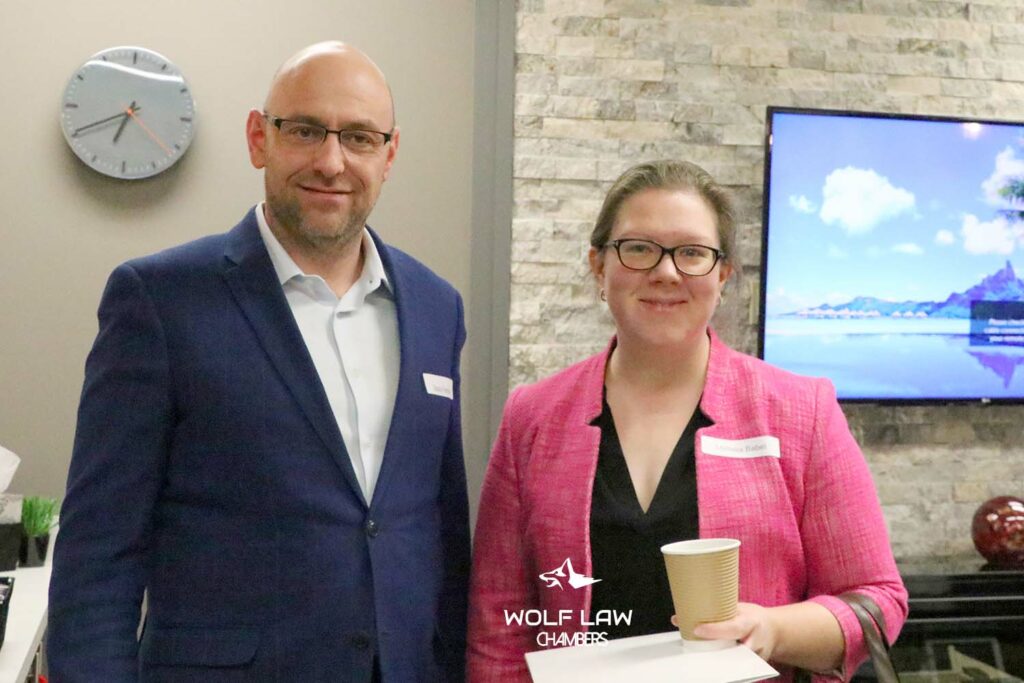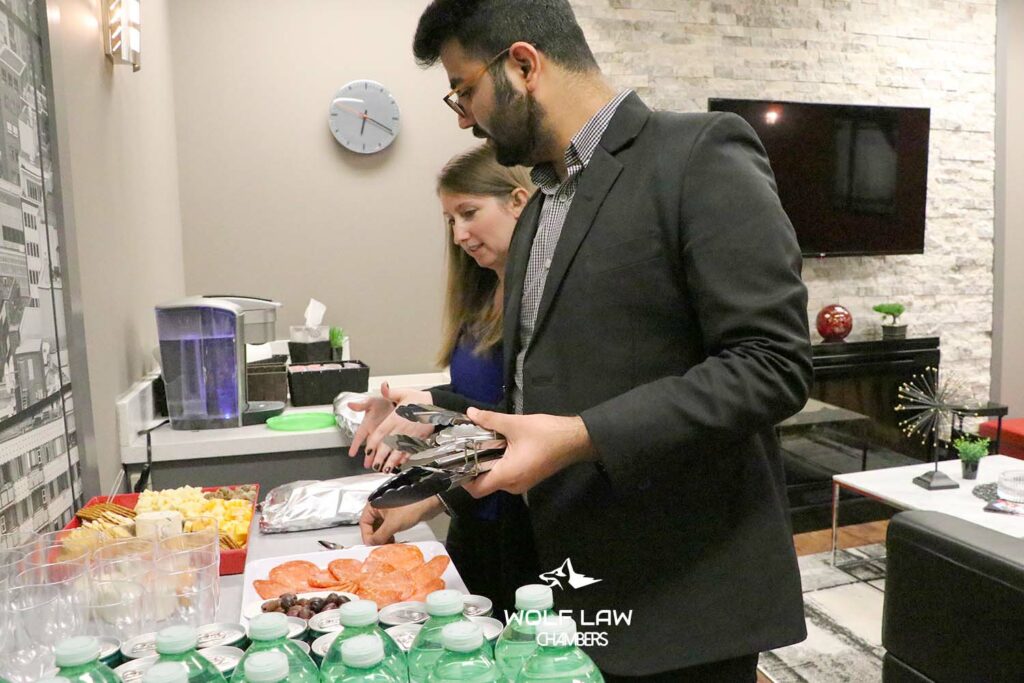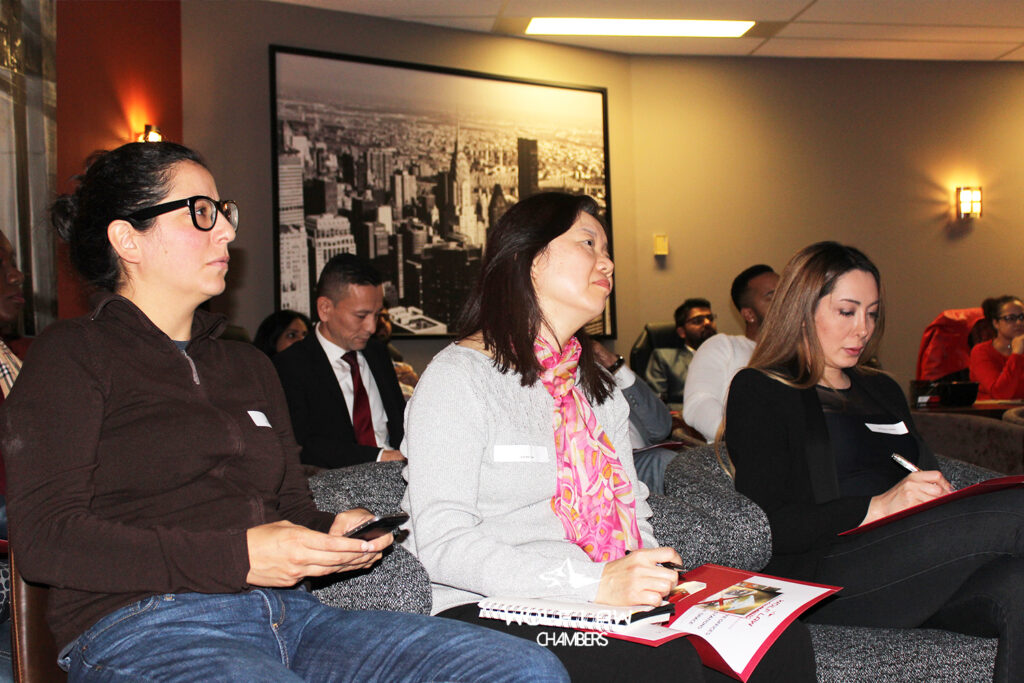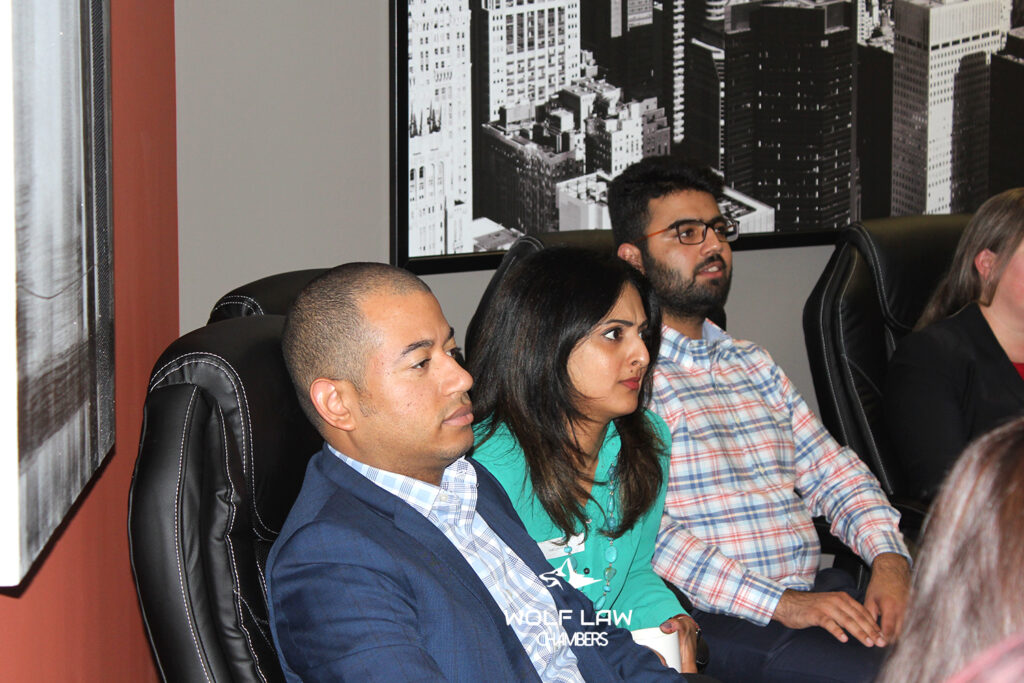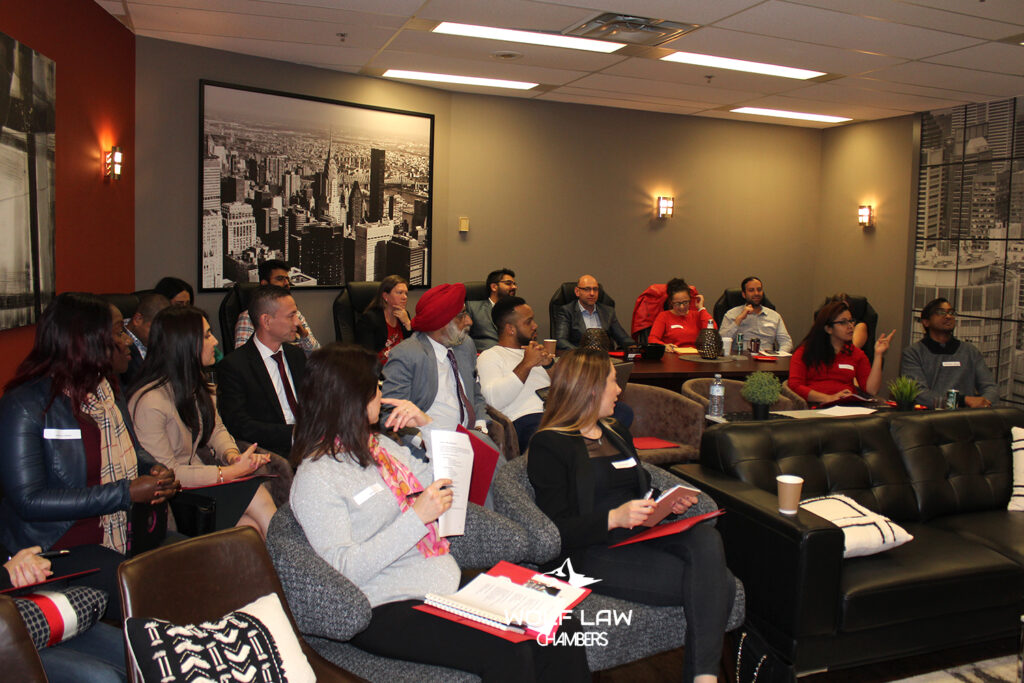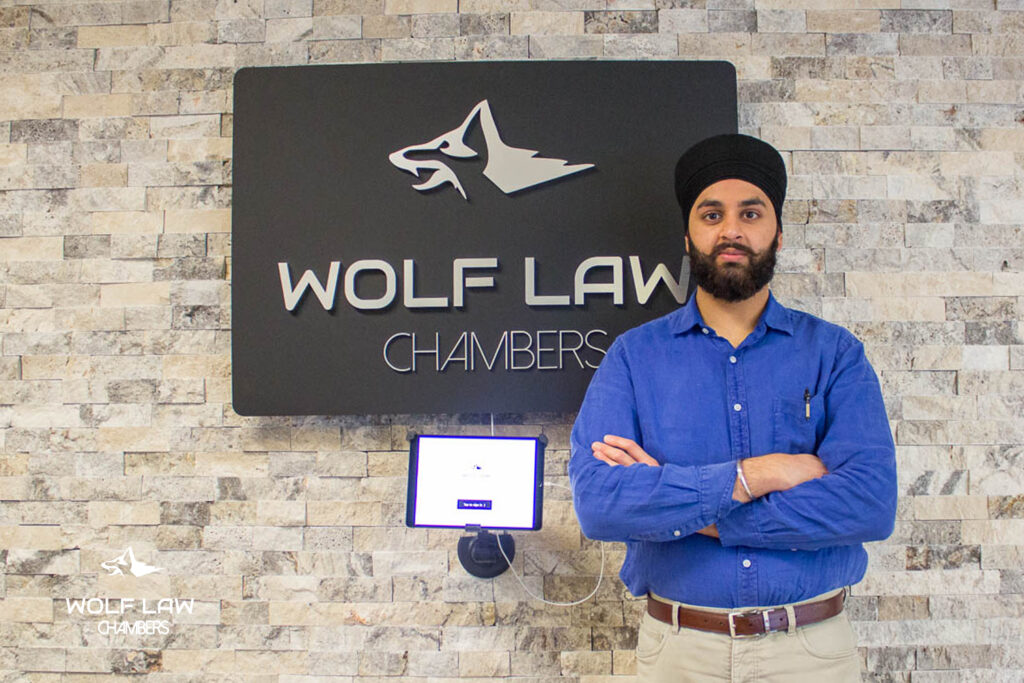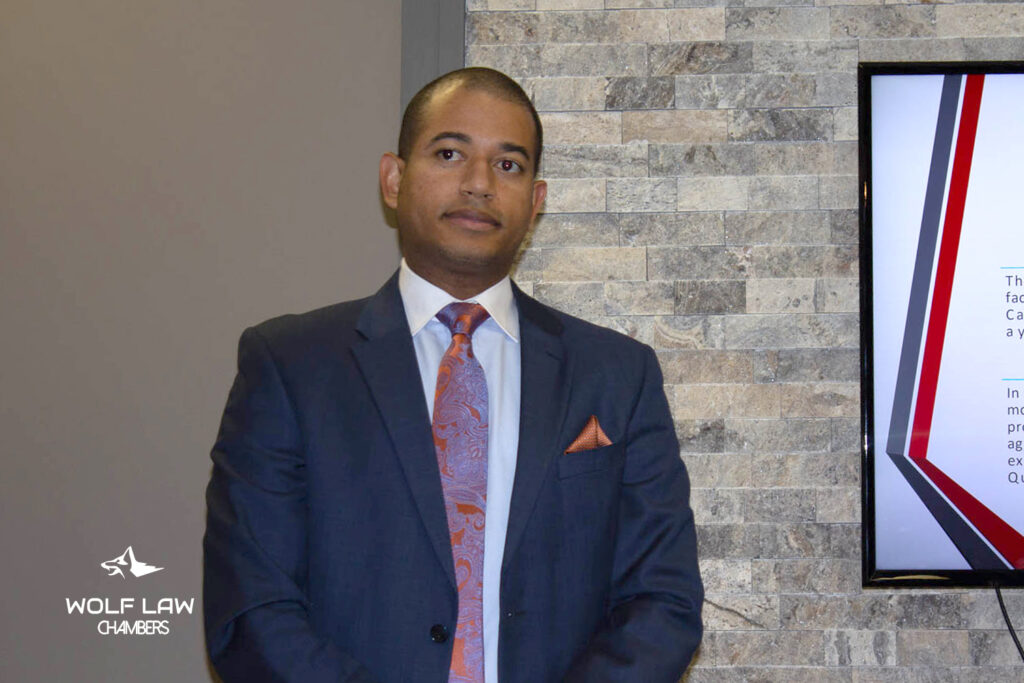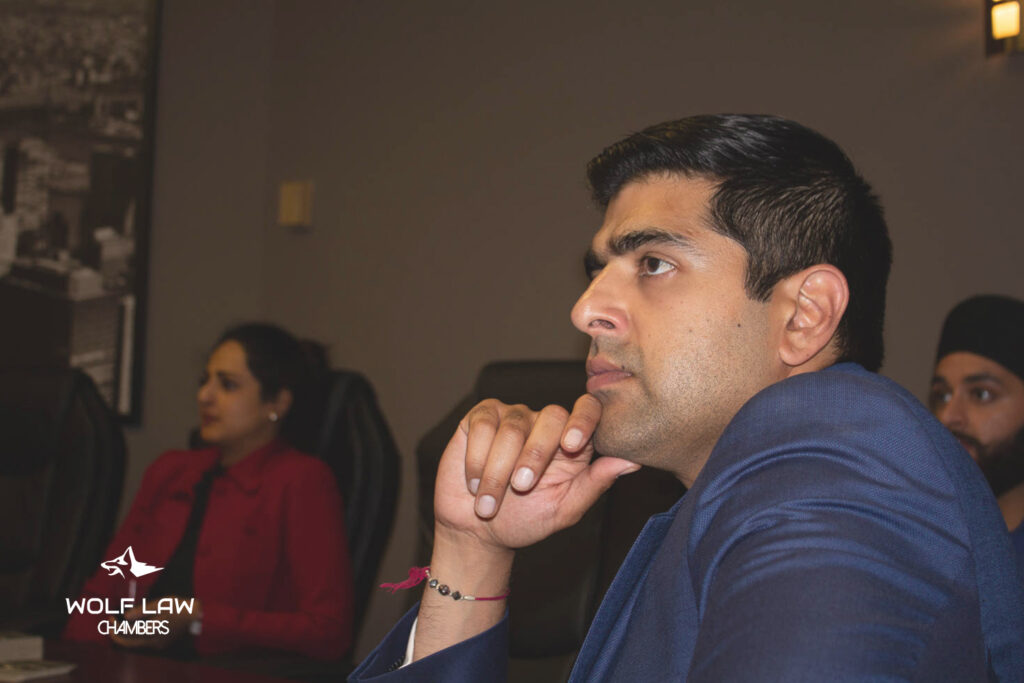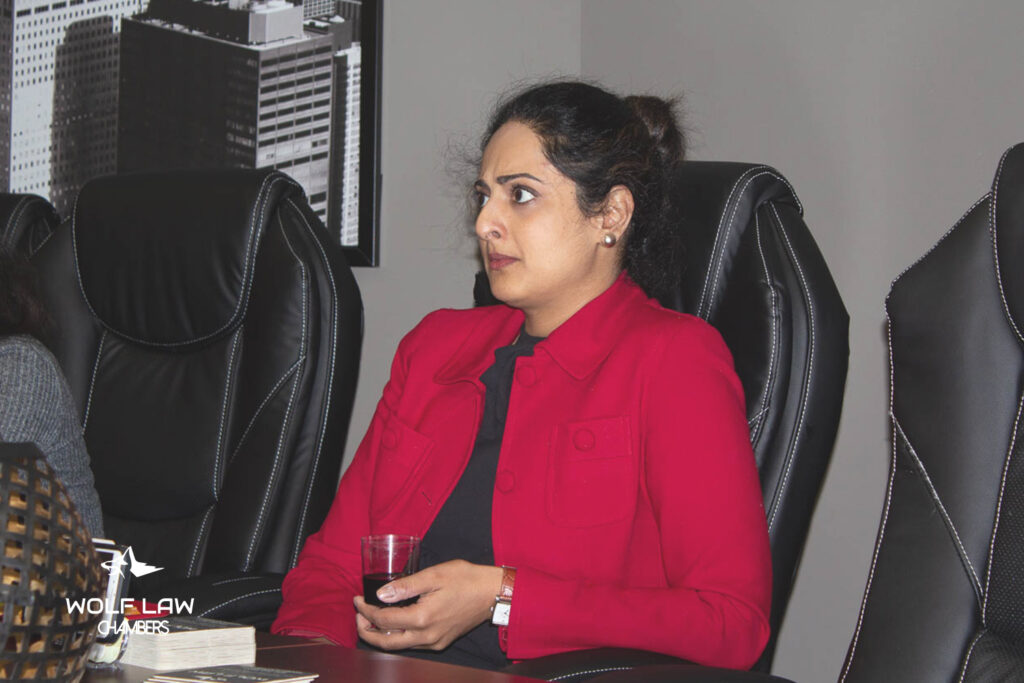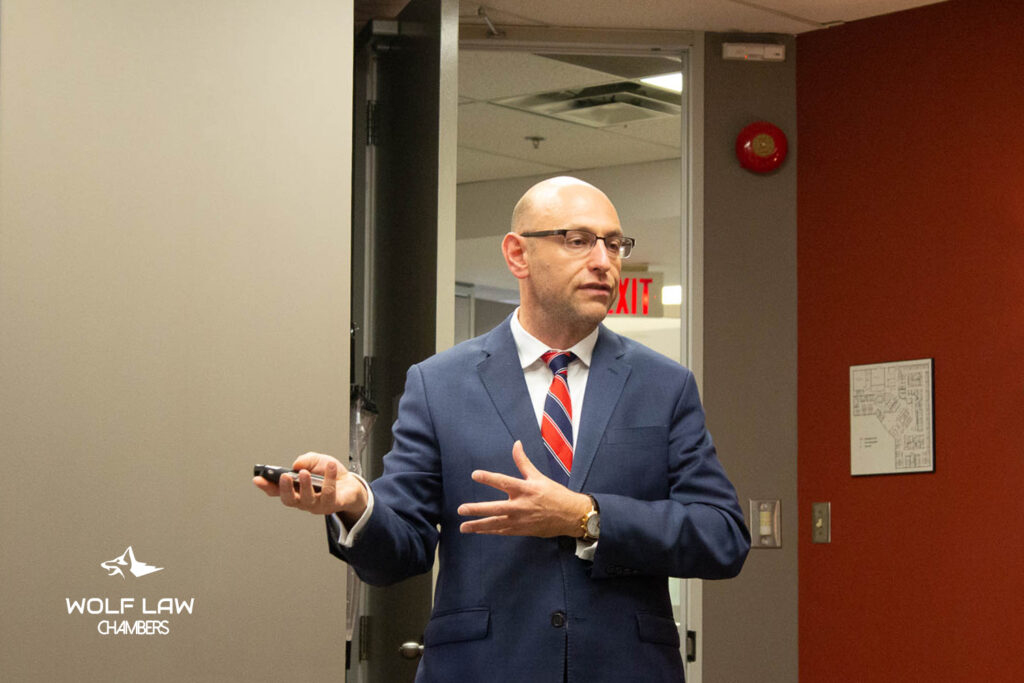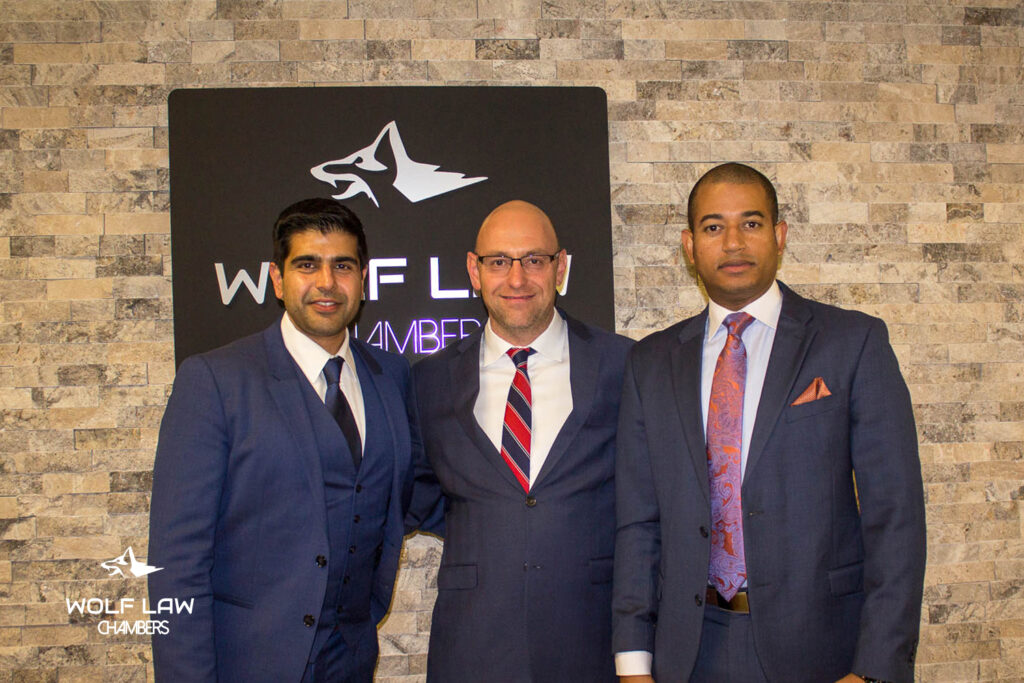LAW
Cyber Security with Humzah Khaial
Cyber Security has been the most requested seminar after How to Survive an Audit (which took place in the spring of 2019). Humzah Khaial kindly gave a seminar on the tactics used by hackers and preventative measures against their attacks to the group gathered at our Oakville location on December 5, 2019.
Even though it can be a scary topic, it is important to educate ourselves not only about ways to prevent attacks but also how hackers try to infiltrate our systems. If we know their methods, it’s easier to recognize their tactics.
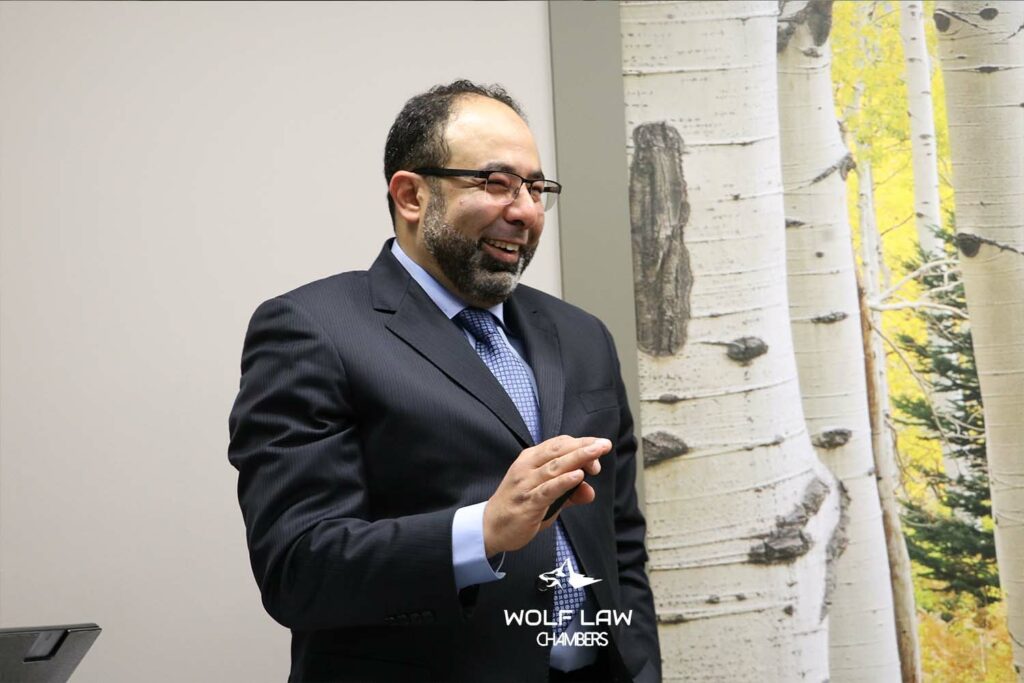
One of the main targets for hackers is small businesses because they’re lucrative. They have money and sensitive information, but they’re small, so they don’t have a dedicated security department, making them easier to hack into.
What to look for
Attachments in emails can look legitimate. But if after clicking on the attachment, it asks you to change something to your system, don’t. If you do, it gives access to the hacker.
How do you know the email is fake? Hover over the “From” address. Microsoft Office and Outlook 365 now give you the full address when you hover. This is to help you identify senders. If you don’t recognize the sender, don’t click.
Another technique hackers use is grammar and spelling mistakes. They want to filter out anyone who is paying attention. They want victims who aren’t paying attention because those people may not remember what exactly they clicked on or allowed onto their computer.

If the email contains an image of text instead of just plain text, this could be hackers trying to get around your detection software. Software can read text easily, but it cannot read images.
Prevention
The best way is a combination defence. Use as many methods as possible to foil hackers.
When on a public network, use a VPN, a Virtual Private Network. It acts as a tunnel between your device and the public network, preventing any would-be hackers from easily accessing your device and any passwords you may enter while on that public network.
Constantly back up your work. This will protect your information no matter what happens.
Don’t use the same password for everything and use a combination of symbols, letters and numbers. Try not to put passwords on sticky notes. They can get lost easily.
Use two-factor authentication. It’s a password and a code sent to your phone, extra security to verify it is you who is accessing the account.
Update all operating systems on a regular basis.
Employees are your first line of defence. It’s important to train them in security awareness and prevention.
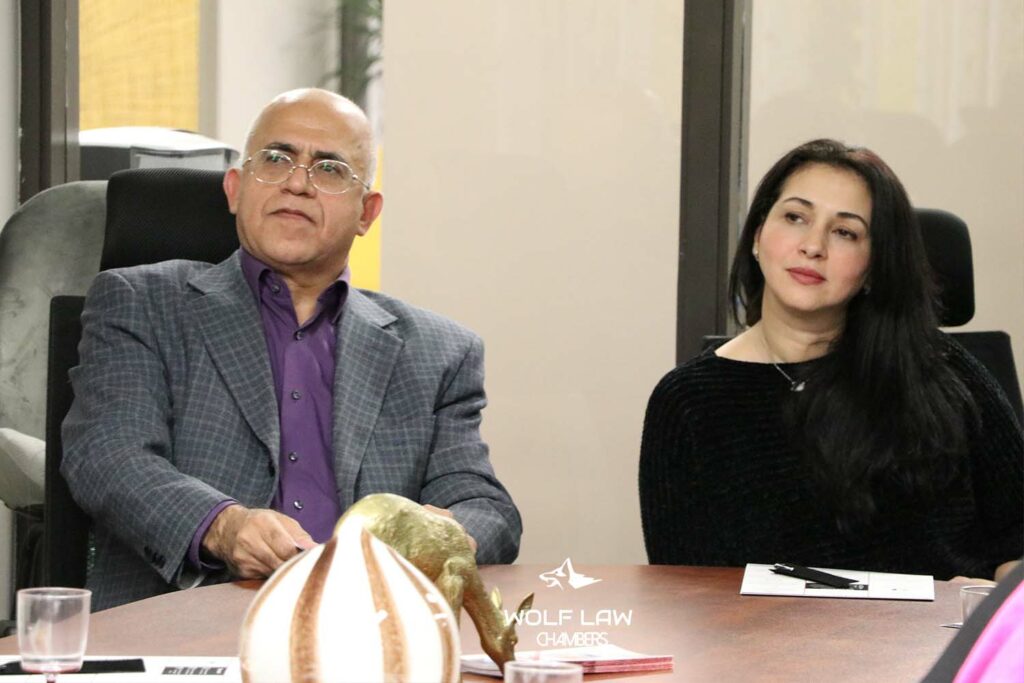
Risk Management
Going forward, we need to: prevent, protect, educate. It’s a continuous and changing process. The technological landscape is constantly changing and we need to keep up to date with it.
As the head of your business, you set the tone for your organization. Preventive, protective and educational measures starts at the top. It starts with you.
At Wolf Law Chambers we strive to host seminars that are relevant to the challenges legal practitioners are facing today. Let us know if there is a topic or challenge you want to learn more about.
Oakville Grand Opening
The red ribbon stretches across the entrance. Snip, snip, sings the great golden scissors. The ribbon flutters to the ground. The Oakville location of Wolf Law Chambers is open!
On December 5, 2019, we celebrated the official opening of the Wolf Law Chambers West location in downtown Oakville.
The man behind Wolf Law Chambers, Dezso Farkas, moved into the realm of solo practice just over a year ago. He discovered that there were very few, if any at all, work spaces designated to the legal practitioner who chose to strike out on their own while cultivating a community. He decided to change that.
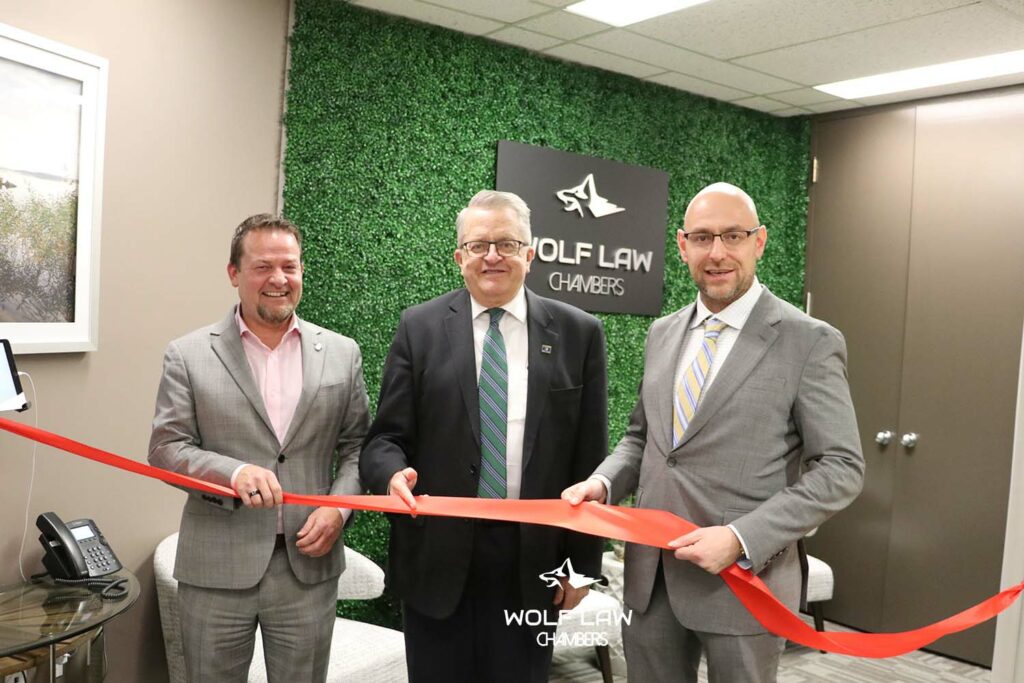
He opened Wolf Law Chambers in Mississauga in the spring of 2019. Even though it’s only been a little over half a year, Dezso is obviously filling a need, because the Mississauga location is reaching capacity. When he asked himself where he wanted to go next, he already knew the answer: beautiful downtown Oakville.
Thank you so much to everyone who came out and celebrated with us! It was such an honour that you chose to celebrate this milestone with us. Thank you to Mayor Rob Burton who came and cut the red ribbon, officially opening our downtown Oakville office with a smile and a twinkle in his eye.

Wolf Law Chambers is all about providing a place for legal practitioners to collaborate and be part of a community while still maintaining their solo identity and brand. If this sounds like something you’d like to be a part of, come on in. The doors are open.
Scale up Your Legal Practice – A Successful Event
We would like to send out a huge thank you to everyone who came out on the evening of November 28, 2019 to our event Scale up Your Legal Practice. We had a great turnout of both paralegals and lawyers (and a printer who specializes in business cards!) We listened to presentations given by Amanda Russell from Legal Shield, who sponsored the event, and Dezso Farkas of Farkas Law about the importance, advantages and opportunities of networking while also having the opportunity to put their advice into practice.

Amanda Russell started the evening with a presentation about Legal Shield, an organization that is dedicated to providing legal access to its members through a network of law firms.
Legal Shield wants to help middle-income people who are priced out of hiring lawyers. They want to give these people access to law firms in case they need help with contracts or setting up a will or really, any legal issue. Legal Shield wants to connect people with lawyers or paralegals who can help.
The question then becomes how can lawyers or paralegals practicing on their own become involved with Legal Shield?
Amanda explained that Legal Shield is always looking for individual lawyers and paralegals to add to their referral network. If the designated law firm chosen by Legal Shield as their in-province representative is too expensive or can’t meet the needs of the client, a referral is made to a lawyer or paralegal within the network who can do so. It can become another way for lawyers and paralegals to gain clients and increase their network.

Though it may seem ironic to have a talk on networking at a networking event, Dezso Farkas’s presentation was informative and humorous. He spoke about the principles of networking (and how similar they are to dating) and the different personality types that might be found at networking events.
He addressed the pitfall that many of us fall into: going to these events with a specific goal or person in mind to connect with. Throughout his talk he emphasized the benefits of having no expectations, to take the opportunity to have fun, meet people and explore all the different and unique ways collaboration could be possible.
Did you know there were six personality types that show up at networking events? Dezso discussed their attributes, the benefits of knowing what type you might be, and how to recognize the different personalities at an event so that you might connect more effectively. To name just a couple, there was “the detective” who does their research on attendees beforehand to initiate an informed conversation, and “the comedian” the person who wins everyone over with humour.
The evening ended as it began – with mingling and conversation as the attendees introduced themselves, what area of law they specialize in and what they’re looking for, but also enjoying chats about the holidays and good food.
As Dezso said, networking is a numbers game. The more you go to, the more practiced you’ll be, the more meaningful connections you’ll make. If you missed this one, there are more coming. There’s always a chance to practice your networking skills. Feel free to join us, start a conversation and have some fun.
The Best Virtual Office For You
Working from the comforts of your home is definitely viable for legal professionals as it offers economic flexibility due to varied reasons. There is no commute, you get to stay in your pajamas, customize your environment, and are able to create a flexible schedule for yourself. One important shortcoming though, is the lack of a professional office space to meet clients, a registered business/corporate address, and space for storing away documents and/or items that are not needed immediately. Let’s face it, a home is a home and a workplace is a workplace. There is a certain limit to conducting business from your home. You will probably function optimally if you complete work assignments in designed workspaces, which have the resources to help you succeed in your area of legal practice.


Such a spaces exist in the heart of downtown Mississauga and downtown Oakville. Welcome to Wolf Law Chambers. This workspace has virtual offices to fulfill your professional needs and requirements. The benefits of renting a virtual office space at Wolf Law Chambers include accessibility to an elegant boardroom to seat and meet with your clients, a registered mailing address, clerk office spaces to use and complete your tasks, access to mail and courier services, a readily available printer for copying/faxing/scanning, and access to a private internet network. We also have diligent and reliable process servers whose services you can use, IT support for your practice, and office coordinators always available to help. Wolf Law Chambers is the perfect office space for legal professionals looking to operate from a virtual office, but that was just the tip of the iceberg.


Here at Wolf Law Chambers, we aim to provide legal professionals with all the tools they need to succeed. Our goal is to build a community of legal professionals that can work together in collaboration and grow together. Although the legal professionals operate under their own professional corporations, they are able to work in collaboration on matters which encompass their areas of expertise. We have marketing and content creating specialists who are able to write and publish articles in your area of practice. We are constantly looking to promote everyone within our community. We provide the best platform we possibly can to all of our members and want to see them grow in their practice at all times. We host onsite events, seminars, and CPD workshops with some of the industry’s leading professionals. At these events we leave the floor open for anyone from Wolf Law Chambers to share their experience and expertise in their field. We aim to give all members of our chambers as much exposure as possible.


In providing extensive support and promoting your practice, we want to see you flourish in your legal practice. Come and visit Wolf Law Chambers at 90 Matheson Blvd. E. in Mississauga and 277 Lakeshore Road East in Oakville and see how we can help you build your practice and provide a sustainable platform for you to thrive in your legal career.
Learn How You Can Survive the Law Society Audit
Wow, what an amazing turnout on the eve of October 10th, 2019 at Wolf Law Chambers! We had Mark Dormer of Cosgrove give a very insightful presentation to our electric audience. It was a true success, so much so that we are hosting another in depth presentation on readying your practice for the Law Society audit in the early part of 2020. We host a variety of seminars, workshops and Continuing Professional Development (CPD) initiatives but the Law Society audit is one that touches base with all legal professionals. We have all gone through an audit by the Law Society or will be going through one in the near future. Instead of leaving things to the last moment and stressing yourself, the best approach is to ensure that you are complying with the outlined practice strategies for your area of practice from the beginning. This ensures that the proper processes for record keeping are already in place and excellent habits are developed. Thus, you will not only ‘survive’ the audit, you will thrive and excel in your legal practice.

Mark Dormer, owner and president of Cosgrove, possesses grassroots knowledge of law firm management and is able to transfer is effectively to legal professionals in all areas of practice. These techniques help improve profitability and guarantee that the fear of Law Society audits is alleviated. Marks Dormer suggests that in preparation for the audit, legal professionals should:
- Develop processes for record keeping procedures that are compliant
- Maintain those systems
- Maintain up to date records
- Be proactive
Instead of panicking and scrambling things last minute, doing the above will most definitely yield the right results for you. The keys for a successful audit and practice management established by Mark Dormer are financial and client record keeping.
For financial record keeping:
- Record method of receipt for trust and general transactions (cheque, wire, etc.)
- Record method of payment for trust and general transactions
- Prepare a Form 9A for electronic transfers out of trust
- Maintain valuable property record
- Maintain cash receipts book
- Maintain Referral Fee Journal
For client record keeping:
- The client’s full name.
- The client’s business address and business telephone number, if applicable.
- If the client is an individual, the client’s home address and home telephone number.
- If the client is an organization, the organization’s incorporation or business identification number and the place of issue of its incorporation or business identification number, if applicable.
- If the client is an individual, the client’s occupation or occupations.
- If the client is an organization, other than a financial institution, public body or company that is not a private company, the general nature of the type of business or businesses or activity or activities engaged in by the client, where applicable.
- If the client is an organization, the name, position and contact information for those individuals authorized to give instructions with respect to the matter for which the licensee is retained.
- If the client is acting for or representing a third party beneficiary or a principal, information about the beneficiary or principal as applicable.
- Verification of identity when receiving, paying or transferring funds.
It is clear that a successful audit requires for a legal professional to execute proper record keeping techniques that are in compliance with the Law Society’s code of conduct. Building the right habits from the initial stages of your practice will establish processes that allow for you to manage your practice with the highest efficiency. It is very much possible that an auditor may note down a few areas of concern despite your aim for perfection but that is nothing to be worried about. The auditor is only trying to HELP YOU! Take note and consideration of their recommendations and speak openly to them about how you can improve.

For future seminars, workshops, and Continuing Professional Development (CPD) courses, you are welcome to visit Wolf Law Chambers at 90 Matheson Blvd. W, Suite 101, in the heart of Mississauga. We aim to provide a shared workspace for legal professionals to flourish by equipping them with the tools and resources they need to succeed.
Take Your Presentation Skills to the Next Level with These Tips and Tricks
Ever felt nervous while delivering a presentation in front of 5 people? How about 20? Perhaps a 100? What about 1000 or more? Because I surely have! We prepare countless hours to present in front of a crowd, speak in front of the mirror, create que cards, rehearse with and without them, and/or memorize our presentation but still end up losing confidence and getting nervous when the lights shine bright. It doesn’t have to be that way, since it is definitely within our power to change the way we perceive our audience and the way they perceive us. We are fully capable of conveying the message we want and addressing our crowd with glowing confidence each and every time we deliver a presentation. Doing so can surely generate the results we desire and steer us in a direction of accomplishing our aims when presenting.
Max Beaumont, founder of Potato Chip Communications, helps individuals with their public speaking and communication skills through coaching and consulting. His presentation on Presentation Skills for Lawyers was very insightful and thorough in advancing my awareness on how to become a better public speaker and communicate more effectively with my audiences. Throughout his findings, he has come up with a few concepts that are sure to enhance one’s presenting and public speaking abilities.

Mindset
Max spoke on the importance of one’s mindset as a presenter. He said that in order to evoke confidence and energy, one has to focus on how they are helping their audience. This notion creates synergy between the audience and speaker, and your audience will pay attention to what you have to say because you are initiating a sense of care for them. In preparation for your presentation, it is essential that you constantly reflect on how you may be able to help your audience and convey this to them as well. This in turn reciprocates the same effect back and you are able to effectively communicate with your audience.

Body Language
In terms of communication, enough stress cannot be placed on the significance of body language. Max broke down the communication formula with words equating to 7%, tone equalling 38%, and body language being the highest totalling 55%. Our body language conveys more information about us than any other factor so we must pay attention to what we are ‘saying’ even though we may not say a word. Confidence through eye contact, gestures, posture, and your facial expressions will leave an everlasting impact on your audience and convey to them that you care and want to help them.

Audience Interaction
Another critical approach to enhance audience interaction is the remembrance of names. According to Max, name memory involves the following:
- Have a Why
- Be Present
- Repeat Name Out Loud
- Repeat Name In Your Head
By doing so, you are getting members of your audience directly involved in the presentation and establishing a personal connection.
Direct engagement with your audience group also involves asking questions and addressing them by their name. These questions should be relevant to your topic and easy to answer. When asking a question, limit it to a response of a simple yes or no.

Simple & Relevant Messages
As Max outlined, “If you confuse people, you lose people”. Due to short attention spans, keeping people engaged in your presentation is extremely difficult if you do not keep things simple. Avoid jargon and unnecessary words, use relevant examples wherever you can, and above all, simplify the message best you can. There is a reason Albert Einstein once said, “If you can’t explain it simply, you don’t understand it well enough”.

Tone & Delivery
When presenting, be authentic and do not act as if you are a salesperson trying to sell something. Treat the presentation as a normal conversation with the audience. Be inclusive and use references your audience may know. This gains their attention and allows them to relate with you. This forms an understanding and when people sense that you understand them, they are inclined to listen to what you have to say. When addressing you audience, use familiar words and language that they are used to hearing.
Additionally, your tone is equally as important to delivering a powerful presentation. If you are monotone, your audience perceives you are boring, and they will probably disengage immediately. Genuine conversations have changes in pitch patterns and enable our audience to become more interested in our presentations. Your confidence and excitement is revealed through your tone and if you present yourself in such a manner, your audience will definitely feel it.

See It In Action
Incorporate these techniques in your next presentation and I guarantee you will surprise yourself with the results you encounter. Are you still not sure about how you can apply these methods for yourself? Come and visit Wolf Law Chambers for a presentation and see how we implement these techniques to perfection. Come out to 90 Matheson Blvd. West, Suite 101 in the heart of Mississauga to tell us about yourself and learn a few strategies for your next presentation. We are hosting an in-depth seminar on what a Law Society of Ontario audit looks like and how you can prepare your practice to be audit ready. We welcome you to RSVP for our Surviving the Audit event taking place on October 10th, 2019 from 6-8 p.m.
-Narvir Goindi
Practising Law with a Passion
Can we attain a fulfilled existence by helping others? The approach may not resonate with everyone. But for Rick Rye, fulfillment is not elusive when he’s directly involved in changing people’s lives. Family law, considered one of the most complicated branches of law, is the major practice area for Rick Rye. As the principal legal representative at his very own law firm ‘Rye Law Firm’, Rick Rye deals with complicated family issues on a daily basis. Rick Rye’s practice isn’t just limited to family law, he has over a decade of experience in all matters pertaining to immigration law and refugee protection. The extensive exposure to human turmoil may be taxing for some but for Rick Rye seeking a solution to his client’s dilemma is a rewarding experience.
Educational Background
Rick Rye acquired his Law Degree from the University of Leicester and was presented with the ‘LinkLaters’ Business Law award before graduating. Rick was called to the bar 2011 and from there he went on to become a member of the Law Society of Ontario, with which he is still active to date.
Why become a Family lawyer?
After finishing his studies, Rick decided to intern as a legal assistant at a major law firm in Toronto. During his time at the firm, Rick was introduced to a whole new world of real issues rooted in serious human problems. This exposure gave Rick a brand-new perspective on the meaning of compassion. At that point Rick realized that he can choose to pursue a legal profession where he seeks to help other people out, and he did.
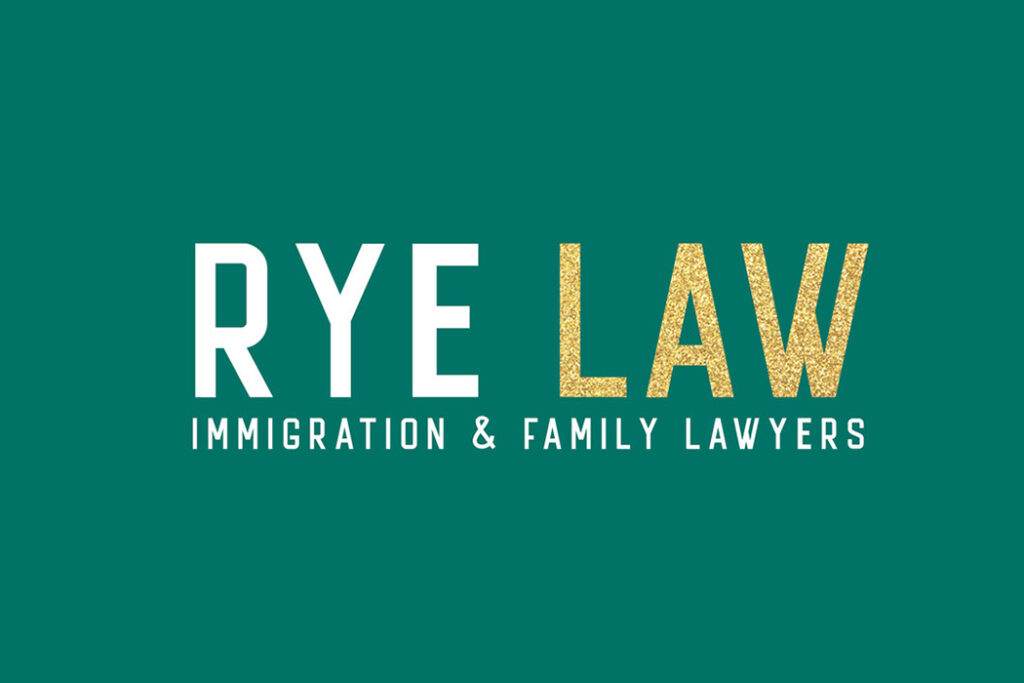
Once Rick discovered his passion, he joined the Law office of Adela Crossley as an articling student and shortly after he was rewarded with a position as an Associate Lawyer. Rick Rye continued to work with Adela Crossley, as well as in-house counsel for one of Canada’s largest Agricultural Corporations, generating substantial expertise in Family and Immigration Law. After gaining this valuable experience, Rick Rye recently decided to branch out and start his own firm; Rye Law Firm, which specializes in Family and Immigration Law. Wolf Law Chambers assisted Rick with this transition.
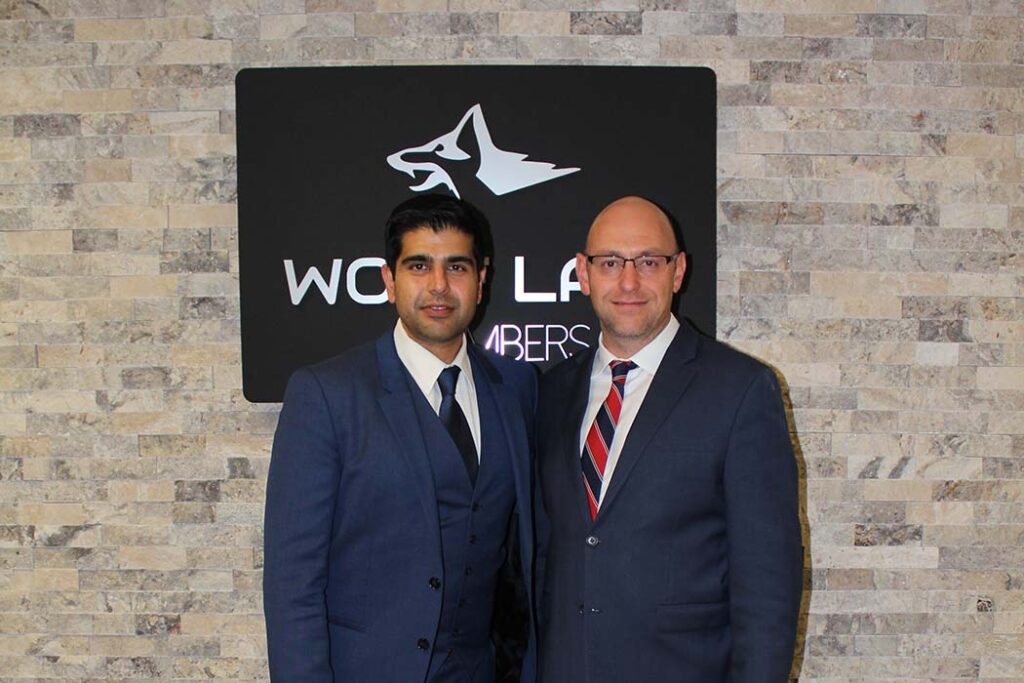
Professional History
Personally, Rick believes in broadening his horizons career wise and likes to employ law diversity in his practice. His long list of work experiences also includes working for a Business firm where he acted as an in-house counsel for one of Canada’s largest agricultural corporations. The diverse legal background Rick Rye has acquired over the years working with both impoverished demographics and major corporations has allowed him to assist clients from all walks of life.
Personal Ideology
According to Rick Rye the idea of dealing with only clerical-based communication without any deeper sense of satisfaction out of work life is not gratifying in any way. Early on in his career, Rick realized he has an innate ability to empathize with the pain and emotions of others and finding solutions to their problems is what drives him in life.
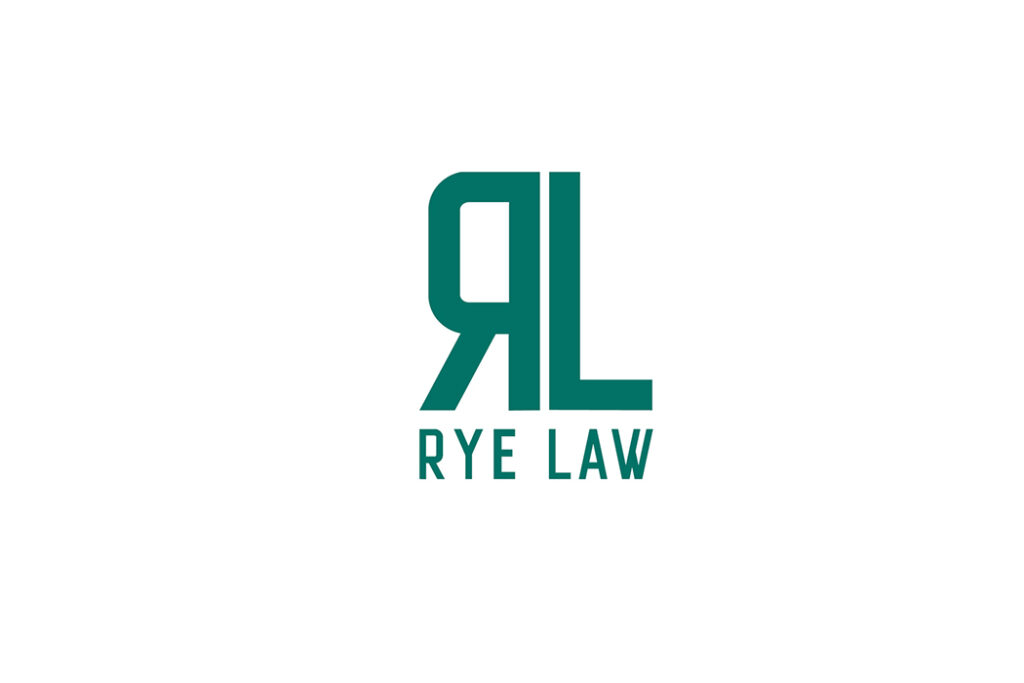
So far Rick has proved to be instrumental in changing numerous lives for the better. Whether its people fleeing from persecution in Africa, Jamaica, Mexico, or an individual looking to escape their prison of abuse at their own home. For Rick, the work he has done is an achievement more fulfilling than any monetary gains.
I like problem solving, especially human problems and I want to stay away from fake interactions.
Rick Rye

Future
Rick believes Canada is a great nation and being a citizen of this remarkable country has been a privilege for him. Dealing with other people’s problems has given Rick more appreciation for his own life and it has increased his sense of duty to help the less fortunate. This sense of honour as a lawyer is one of the main reasons why Rick Rye wants to keep working on the ground, as a Family and Immigration law practitioner.
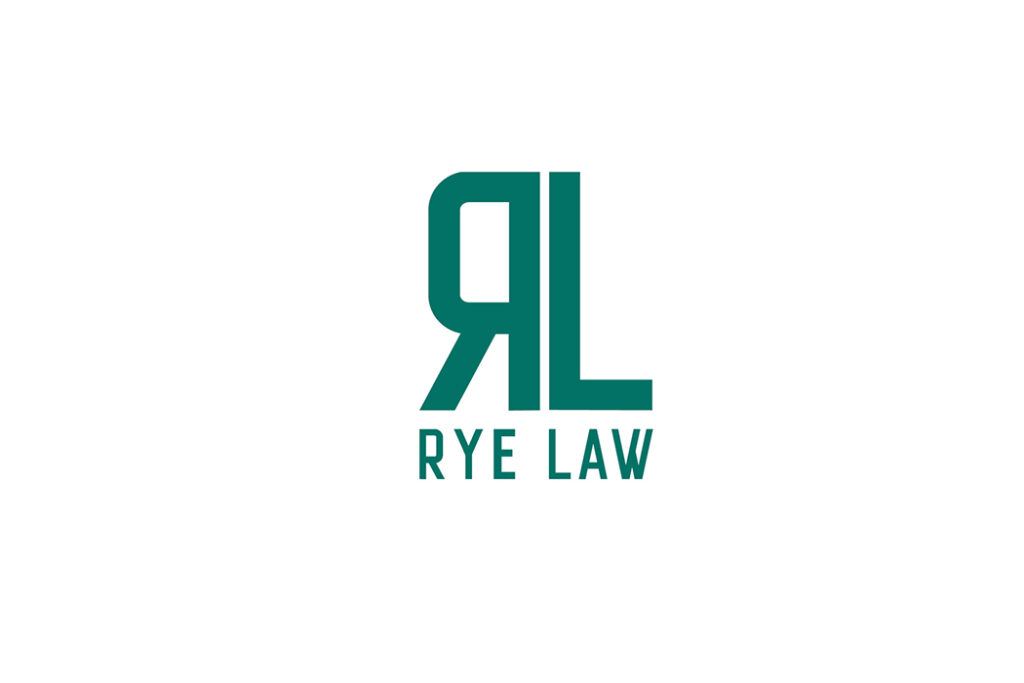
As a lawyer the juxtaposition between serving humanity and finding systematic solutions can be tricky if not carried out efficiently. Rick feels he is at that point in his life where years of legal experience have given him the ability to deal with circumstances and derive favorable results without personalizing the situation.
Hazelton v Perfect Smile: Subleases and Assignments
The Ontario Court of Appeal recently illustrated the nature of commercial tenancies in the case of V Hazelton Limited v Perfect Smile Dental Inc., 2019 ONCA 423. For many years, the courts have been unclear about the impact of a sublease on the relationship between landlord and tenant. However, the time has come for clarity, as the Court of Appeal weighs in on the complex nature of landlord-tenant relationships, particularly where there is a sublease involved.
Facts of the Case
On September 2010, Hazelton (Appellant) entered into an agreement with Perfect Smile (Respondent) to lease the premises. Both parties agreed to a 7-year lease (“Head Lease”), commencing October 1, 2010 and expiring September 30, 2017. The lease agreement had a 5-year renewal option for the tenant, Hazelton, under section 7 of the lease.
Hazelton completed substantial renovations on the premises in 2013. The total cost amounted to $280,000. Hazelton asserted that it would not have spent this money without the benefit of the renewal option.
On August 2016, with Perfect Smile’s consent, Hazelton entered into a sublease agreement with the company, Outhere, a retail clothing store. The term of the sublease was from September 1, 2016 to September 2017 (the last day of the Head Lease). The sublease did not reserve the last day of the Head Lease’s term to Hazelton; instead, both leases were set to expire on the same day. However, this sublease was more restrictive on the sublessee than the Head Lease was on the tenant, since there was no transfer of renewal rights to Outhere.
On March 2, 2017, Hazelton purported to exercise its right to renew the lease. So Hazelton and Perfect Smile began negotiating rent. However, there was no agreement on rent. Months later, on September 28, 2017, counsel for Perfect Smile delivered a letter to Hazelton stating it had no right to exercise the 5-year renewal option. Two days later, the lease expired.
The sublessee, Outhere, managed to enter into an agreement with Perfect Smile, which allowed Outhere to remain in possession of the premises after the sublease ended. It paid Perfect Smile the same rent as it paid Hazelton.
Hazelton was quite unhappy with this outcome, for it sought to exercise its option for renewal. Thus, it commenced an application seeking the following relief:
- A declaration that it rightfully exercised its option for renewal;
- An Order that Perfect Smile and Outhere deliver vacant possession of the premises; and
- An Order that an arbitrator be appointed to determine rent payable during the 5 years, pursuant to the Head Lease.
The Application judge favoured Hazelton, stating Perfect Smile had accepted the renewal option and accepted the renovations by never giving Hazelton notice of alleged default despite knowing about the renovations by at least early 2017. Perfect Smile was held to be in breach of its contractual duty of good faith.
The judge then accepted the proposition that “where rights granted in a sublease are more restrictive than those contained in a head lease, the result is that the rights not granted to the subtenant are reserved to the tenant” (see paragraph 13). The application judge also rejected the proposition that if the last day of the Head Lease is not reserved by the tenant, the sublease is deemed to be an assignment rather than a sublease.
Then, the judge found that Hazelton could claim damages and pursued damages analysis, which led to the conclusion that no damages shall be awarded to Hazelton, since no losses were accrued by the conduct of Perfect Smile.
Main Issues
The matter was brought to the Ontario Court of Appeal, as Hazelton was not seeking damages but sought to retain the premises as the tenant. The principal issue of concern, rather than damages or harm, is whether Hazelton made an assignment rather than a sublease and forfeited its leasehold rights because of its failure to reserve the last day of the Head Lease Term.
The main question, then, must be on the nature of subleases and assignments. What are they? Once this addressed, one may determine whether Hazelton subleased or assigned the premises to Outhere. This will address the importance of tenants reserving the last day of the sublease for themselves.
Relevant Laws
The difference between assignment and sublease are established quite clearly in paragraph 31 of the case, which states:
When a lease is assigned to a third party, the third-party assignee becomes the tenant of the landlord and a privity of estate is established between the two. When the lease is assigned, the landlord’s privity of estate with the original tenant comes to an end, but the privity of contract remains… In contrast, a sublease creates no direct relationship between the subtenant and the landlord – there is neither privity of estate nor privity of contract between them. Rather, the head tenant stands in the position of landlord vis-à-vis the subtenant, while retaining its position as tenant vis-à-vis the original landlord.
The Court then goes on to state, in paragraph 32, the following:
the head lease is assigned unless the sublessor retains a reversionary interest by reserving for itself the last day or some other time period at the end of the term.
So how can we tell the difference between an assignment and sublease? Upon reviewing the case law, and the previous decision, the Court of Appeal is surprised that nobody raised section 3 of the Commercial Tenancies Act, RSO 1990, c L 7 [CTA]. The Court stated, in paragraph 48, “[the given case law] reflected an effort by some courts to avoid characterizing a putative sublease as an assignmnet by expanding the notion of a revisionary interest beyond temporal limits. Arguably, such judicial efforts are unnecessary in Ontario by reason of s. 3 of the CTA.”
Section 3 of the CTA states as follows:
The relation of landlord and tenant does not depend on tenure, and a reversion in a lessor is not necessary in order to create the relation of landlord and tenant, or to make applicable the incidents by law belonging to that relation; nor is it necessary, in order to give a landlord the right of distress, that there is an agreement for that purpose between the parties.
The Court identifies four negatives in this section, namely that:
- The relation of landlord and tenant does not depend on tenure;
- A reversion in the lessor is not necessary in order to create the relation of landlord and tenant;
- A reversion in the lessor is not necessary in order to make applicable the incidents by law, belonging to the landlord-tenant relation; and
- An agreement is not necessary in order to give a landlord a right of distress.
This was used to make the following interpretation in paragraph 68:
Reading s. 3 in context, I interpret it to mean that there may be a sublease even if the last day in the head lease is not reserved, but only when there is sufficient evidence to show that the objective intent of the parties, as reflected in the sublease, was not to create an assignment. Recognizing that a commercial lease is not only a conveyance but also a contract, courts should be permitted to consider the objective intentions of the parties to a purported sublease in order to determine the nature of the impact on the subletting party vis-à-vis its rights under the head lease. In other words, a party may demonstrate that, notwithstanding a failure to reserve the last day of the head lease term, an assignment was not intended by the parties.

Analysis of the Court
This interpretation addressed the heart of the issue at hand, which is whether Hazelton made an assignment rather than a sublease and forfeited its leasehold rights because of its failure to reserve the last day of the Head Lease Term. In this case, the parties provided sufficient evidence that they did not intend an assignment. It must be a sublease. Section 7 of the sublease clearly states that Hazelton has the right to renew the lease and that it is not obliged to renew on behalf of Outhere; and that Outhere has no right to renew the option, as its rights under the sublease expire at the end of September 30, 2017. This was sufficient despite Hazelton not reserving the premises for itself on the last day of the sublease agreement.
As for the other issues mentioned in the case, such as whether the Court of Appeal had jurisdiction to hear this matter or whether Hazelton breached its agreement by renovating the premises, the Court found that it did have jurisdiction and that Hazelton did not breach the agreement. The jurisdiction was based on section 6(2) of the Courts of Justice Act, which grants the Court discretion to combine and hear all issues raised on this appeal. Furthermore, this matter was beyond the jurisdiction of Divisional Court.
As for the breach allegation, the Court simply found that “there is no basis to interfere with the applicant judge’s conclusion that Hazelton did not breach the lease.” The Application judge properly decided this. The main mistake by the application judge was engaging in damages analysis in a matter where damages were not sought.
In the end, the Court inter alia ordered Perfect Smile to give back the premises to Hazelton, for it rightfully exercised its option to renew the lease for a 5-year period.
Conclusion
There are a few important lessons to take from this complex case. First, if intending to enter into a sublease agreement, the sublessor should provide clear evidence within the agreement or otherwise to purport that the parties do not intend to enter into an assignment. Second, this clear intention against assignment may be sufficient to render the agreement a sublease even if the sublessor does not reserve the premise for themselves.
This case also reminds the courts to rely on section 3 of the CTA in determining the nature of commercial tenancy relationships, particularly where there is a need to distinguish between the assignments and subleases. It is noted that:
- The relation of landlord and tenant does not depend on tenure;
- A reversion in the lessor is not necessary in order to create the relation of landlord and tenant;
- A reversion in the lessor is not necessary in order to make applicable the incidents by law, belonging to the landlord-tenant relation; and
- An agreement is not necessary in order to give a landlord a right of distress.
-Aaron Rajesh
Factors to Consider For Your Cross-Border Legal Practice
On Thursday September 19th, 2019 the Wolf Law Chambers community was delighted to have hosted an event attended by sole practitioners from very diverse areas of practice. Many of those in attendance possessed the ability to conduct their practice in foreign jurisdictions and obtain clients internationally. Although this can expand one’s outreach and client base, there are underlying issues that must be considered. Sole practitioners, Dezso Farkas and Gideon McMaster of Farkas Law and McMaster Law, respectively, co-hosted the evening and shared their expertise in professional responsibility for cross-border legal practice.

Some of the lawyers in attendance had been called to the bar in Trinidad & Tobago, India, and the United Kingdom, besides having their current practices established in Ontario. These professionals have to abide by professional conduct rules in both Ontario and abroad, which can be quite a challenge when matters intersect. In these scenarios it is vital to consider 5 areas of professional responsibility: general applicability of professional conduct rules, retainer agreements, marketing of your legal services, bill disputes or professional complaints, and trust requirements. Dezso and Gideon compared the Rules of Professional Conduct in Ontario and the Legal Professional Act of Trinidad & Tobago, which is Mr. McMaster’s home country. A comparative analysis of the 5 areas of responsibility raised immense awareness about the caution that legal professionals must proceed with. What may be applicable and legal in one jurisdiction can have the exact opposite implications in another. Legal professionals are obligated to comply with different sets of rules from multiple jurisdictions when matters cross international borders, so it is in their duty of care to remain well informed of such rules at all times.
1- Professional Conduct Rules
The Legal Professional Conduct Act of Trinidad & Tobago contains a Code of Ethics for Attorneys at Law and is contained in a schedule to the Act. There are two sections in the schedule: the first contains general guidelines while the second has specific prohibitions and mandated provisions. Meanwhile, the Rules of Professional Conduct in Ontario have seven chapters, each of which addresses a different area of consideration for one’s legal practice.
2- Retainers
In Trinidad & Tobago, a retainer is the establishment of a signed agreement between a lawyer and a client. In Ontario, a lawyer-client relationship may be established without formality. Under specified rules in Ontario, if you are consulted by a lawyer and provided with legal advice, a lawyer-client relationship exists.
3- Marketing of Legal Services
In Trinidad & Tobago, attorneys are not permitted to advertise and may only market their services within the confinements of the Legal Professional Conduct Act. Lawyers are encouraged to build their client base through hard work and reputability. In Ontario, a lawyer can market their services but is limited in the scope of doing so.
Article 4.2-1 of the Rules of Professional Conduct in Ontario states the following:
“A lawyer may market legal services only if the marketing
(a) is demonstrably true, accurate and verifiable;
(b) is neither misleading, confusing, or deceptive, nor likely to mislead, confuse or deceive; and
(c) is in the best interests of the public and is consistent with a high standard of professionalism [1].”
A few examples of marketing that may infringe upon this rule may be the suggestion of qualitative superiority over other lawyers, raising expectations through false perceptions, using testimonials that contain emotional appeals, etc.
4- Disputing Bills
In Trinidad & Tobago, a client may file a complaint to the Disciplinary Committee in the case of a dispute arising between them and the lawyer. Professional complaints are also filed with the Disciplinary Committee. In Ontario, clients are encouraged to talk to their lawyer/paralegal and if that does not settle the dispute, they can contact the Assessment office to have their bill reviewed. An Assessment Officer of the Ontario Superior Court of Justice will then review the lawyer’s bill. For professional complaints, the Complaints and Compliance department is the first point of contact, and if then proceeds to the Law Society, which can deal with a wide array of matters related to lawyer and paralegal professional conduct. If there is a need to recover lost money due to a legal professional’s dishonesty, one may apply to the Compensation Fund for further review.
Trust Requirements
In Trinidad & Tobago, the requirements for trust accounts are principle based and not entirely set in stone. The underlying agenda of such principles include honesty, punctuality, diligence, separation of personal and trust accounts, and ability to refund money owed to clients. On the contrary, Ontario is very strict in their approach to trust requirements.
There are strict guidelines on all of the following:
- Books and Records
- Opening a Trust Account
- Interest on the Trust Account
- Trust Account Signing Authority
- Trust Account Operation
- Reconciling a Trust Account
- Trust Deposits, Transfers, Withdrawals
- Closing a Trust Account
- Reporting Mixed Trust Accounts [1]
Overall, there are many factors that should be taken into consideration for one’s cross border legal practice and it is deemed necessary to remain in tune with rule of professional conduct for all jurisdictions that apply.
The following questions were raised by both Dezso and Gideon for those who are engaged in cross-border legal practices:
- Could there be lawyer/client relationship of some type in Ontario?
- Should it be defined or limited in writing?
- Which Rules of Civil Procedure are redundant between the two jurisdictions?
- Which rules conflict? (ex. different standards)
- Which is the higher standard? (ex. trust requirements)
- Through what means did the client find me?
- If a complaint arises, where should it be made?
- Should this be defined in an Ontario retainer agreement?
- Where will trust funds be deposited?
- Can trust funds be deposited somewhere else?
- Should a firm in the foreign jurisdiction be involved to act as party to the retainer agreement and receive the client’s trust funds?
- How should your relationship to that foreign firm be defined?
- Does any aspect of the matter involve Ontario law?
- What type of advice is being given and does it implicate Ontario law in any way?
In answering the above, one may assess whether or not they are complying with the rules of the respective jurisdictions.
Overall, Mr. Farkas and Mr. McMaster brilliantly raised awareness about practicing Ontario lawyers called to the bar in foreign jurisdictions. They provided those in attendance with real life scenarios that exhibited the need for understanding professional responsibility when practicing across borders.
Wolf Law Chambers, located at 90 Matheson Blvd West, Mississauga, ON L5R 3R3 is consistent and thorough in hosting events like this. We invite you to join us on October 10th, 2019 for our “Surviving the Audit” event.
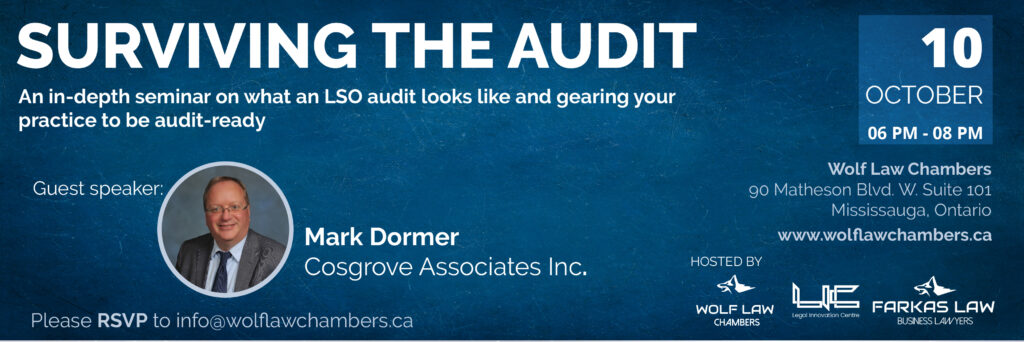
Please subscribe to our newsletter and tune in for updates on future events and articles.
Best Interests of the Child: An Intersectionality Between Family and Immigration Law
Article 3.1 of the United Nations Human Rights (UNHR) Convention on the Rights of the Child (CRC) states the following:
In all actions concerning children, whether undertaken by public or private social welfare institutions, courts of law, administrative authorities or legislative bodies, the best interests of the child shall be a primary consideration [1].
The Convention on the Rights of the Child is the most widely ratified treaty in human history with 194 countries abiding by it [2]. It is internationally observed and accepted, while it’s application and practice is a topic for another day. In understanding who is protected under the CRC, we must define what it means to be a child.
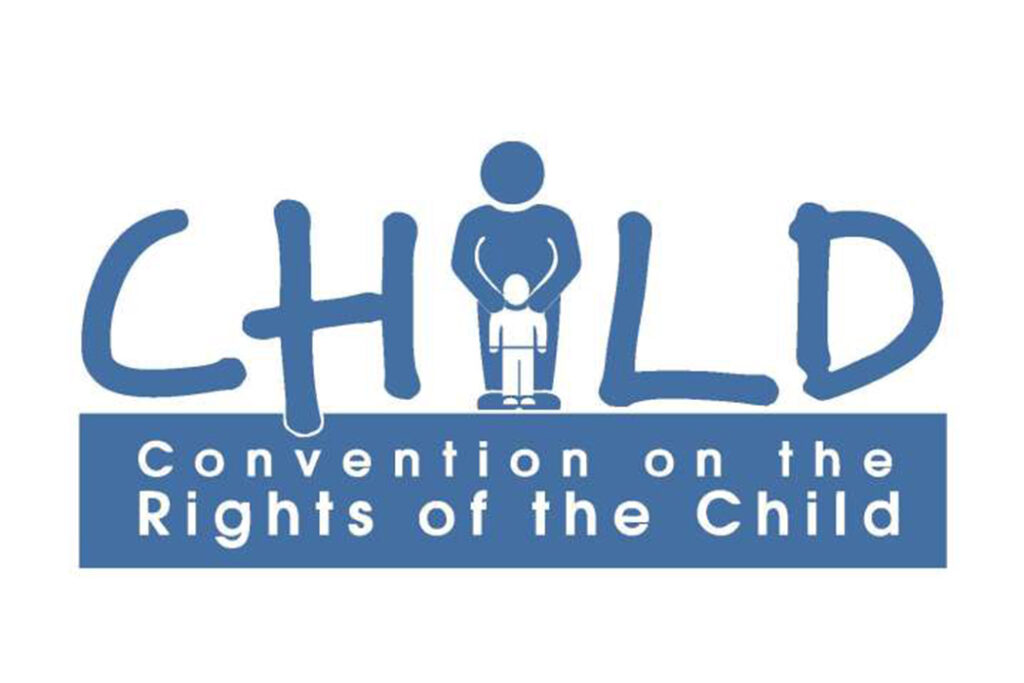
According to the United Nations a child is,
…every human being below the age of eighteen years unless under the law applicable to the child, majority is attained earlier [1].
Now, it is quite important to asses the relevance of these international statutes in relation to Human Rights within Canada. To put into perspective the importance of human rights in Canada, we must understand that human rights are protected federally and provincially. The human rights laws in Canada stem from the Universal Declaration of Human Rights (UDHR). In fact, Canadian lawyer and scholar, John Humphrey, played an integral role in the drafting of the UDHR in 1948 as well [3]. Globally, many countries have applied the declaration and its contents to bolster their own national legislations and to act in accordance with the statutes outlined within international human rights laws. In Canada, human rights are entrenched in the Constitution of this very nation, most notably in the Canadian Charter of Rights and Freedoms but they have an overlapping relevance in other areas of law as well. Family and immigration law within Canada places great importance on the best interests of the child, drawing from the Convention on the Rights of the Child. This principal governs decisions and judgements within family and immigration matters, that of which involve children [4]. It is truly a point of intersection across both fields of law and legislation.
The Canadian Bar Association brilliantly outlines the best interests of the child and the three fold concept that entails it.

They use the following general commentary from the Convention on the Rights of the Child to elaborate on their viewpoints about the best interests of the child:
A substantive right – a primary consideration in actions concerning the child due to the child’s dependency, maturity, legal status and often “voicelessness”;
An interpretive principle – if a legal provision is open to more than one interpretation, the interpretation which most effectively serves the child’s best interests should be chosen;
A rule of procedure – legal representation, timely decisions, reasons for how a decision was reached, how factors were weighed, and how the child’s views were considered. [4]

In other words, children have a legal entitlement that ensures those decisions which concern them are carried out with their best interests as a primary consideration. Next, for legislation that is open to interpretation, interpretations serving the best interest of the child should be chosen [4]. The final component involves procedural considerations for the best interests of the child. Whether it is substantively or procedurally, the best interests of the child are to be weighed and considered first and foremost. With this three-fold concept underlying the concepts and legislation set forth by the CRC, let’s examine how it has played an effective role in Canadian law.
In determining child access and custody in the province of Saskatchewan, section 8 of the Children’s Law Act outlines the necessary conditions to be met when making a decision about ordering custody of a child. Subsequently, they note considerations that are to be weighed in granting custody of the child as well. These include, but are not limited to, the capacity of the person seeking custody of the child, the child’s wishes, the quality of the relationship between the person seeking custody and the child themselves, the physiological, emotional, psychological, social, and economic needs of the child [5].
Additionally, section 24 of the Children’s Law Reform Act of Ontario determines the merits for application of custody or access for a child [6]. This statute places immense importance on the best interests of the child, with special consideration of the child’s needs and circumstances. Some of these needs and circumstances include the plan proposed by the person(s) applying for access of custody of the child, the child’s views and preferences, the stability of the family unit in which the child will potentially settle, to name a few [6]. The Revised Statutes of Ontario also outline the procedural practices in place by the court in issuing orders for the custody and access of a child [7].
Federally, the Divorce Act, examines the best interests of the child in carrying out orders for custody of a child [8].
Under section 16, subsection 8, it states,
In making an order under this section, the court shall take into consideration only the best interests of the child of the marriage as determined by reference to the condition, means, needs and other circumstances of the child [8].

It is quite apparent that federally and provincially the underlying principles governing child custody and access in family law clearly place a high degree of significance on the best interests of the child. The priority placed upon the needs and the circumstances of children is not just limited to the area of family law. It also constitutes the legislation surrounding immigration in Canada involving children. In exploring the application of the best interests of the child within Canadian immigration law, let’s take a look at the Immigration and Refugee Protection Act. Pursuant to the act, those normally not able to seek permanent residency in Canada, are able to apply under humanitarian and compassionate grounds in special circumstances [9]. The humanitarian and compassionate grounds assessment weighs the best interests of the child highly and its jurisdiction is within Canada and overseas [9]. Generally, the child’s physical, emotional, social, and cultural welfare are factored in when assessing a humanitarian and compassionate grounds application [9]. The factors considered include, the level of dependency between the child and the H&C applicant, the child’s link to the country in relation to which the application is considered, the impact of returning to their home country, the medical needs of the child, the impact on the child’s education and growth, etc. [9]

Immigration can involve the detainment and release of individuals depending on the context of their specific case.
Under Division 6, section 60 of the Immigration and Refugee Protection Act, states the following:
For the purposes of this Division, it is affirmed as a principle that a minor child shall be detained only as a measure of last resort, taking into account the other applicable grounds and criteria including the best interests of the child [10].
The Immigration Appeal Division does not overlook the importance that is to be placed upon the safety and best interests of the child. It is affirmatively understood from this statute that detaining a minor is the absolute last resort and does not serve in the best interest of the child [10].
Moreover, the right to appeal immigration decisions under the Immigration Appeal Division has procedural laws in place that administer how the government will proceed in detention and release of immigrants/refugees [10].
Section 68, subsection 1, states the following in regard to a removal order being stayed:
To stay a removal order, the Immigration Appeal Division must be satisfied, taking into account the best interests of a child directly affected by the decision, that sufficient humanitarian and compassionate considerations warrant special relief in light of all the circumstances of the case [10].
In the case of a removal order being stayed, the best interest of the child is again given the utmost priority if a child is directly involved. The statute aims to heavily consider humanitarian and compassionate grounds when ordering a stay for a child [10]. This leads one to believe that Immigration Canada carefully formulates a decision oriented in the best interests of the child.

A famous Canadian immigration case based upon H&C grounds is that of Baker v. Canada. An illegal immigrant in Canada for 11 years at the time, on the verge of being deported, filed an application for permanent residency [11]. Her application was rejected and when she filed with the Federal Court, they deemed that it was not necessary to evaluate her application in light of the best interests of her children. On appeal, the Supreme Court of Canada reversed this decision. They held that the human rights of Baker’s children should be considered and that decision makers of this case should abide by the values in international human rights law, specifically the Convention on the Rights of the Child [11]. Overall, it was established that an immigration decision made on H&C grounds would be arbitrary if an analysis of the best interests of the child was not implemented [11].
Closing thoughts
Stemming from international human rights law, the best interest of the child is a principle vested in Canadian family and immigration law involving children. It is undeniably an overlap between the two areas of law and the general guidelines are quite the same. In all actions concerning children, the primary consideration is the best interest of the child. In Canada, both federally and provincially, substantive and procedural law illustrate how the best interest of the child is a fundamental standard in decision making for family and immigration matters regarding children.
[1] Convention on the Rights of the Child, 2 November 1989, UNTS, Part I, Article 1(3) (entered into force 2 September 1990)[2] Human Rights Watch, “25th Anniversary of the Convention on the Rights of the Child” (17 November 2014), online (blog): Human Rights Watch <https://www.hrw.org/news/2014/11/17/25th-anniversary-convention-rights-child>
[3] Canada, Canadian human rights commission, Human Rights in Canada, < https://www.chrc-ccdp.gc.ca/eng/content/human-rights-in-canada> accessed 12 September 2019. [4] The Canadian Bar Association, BEST INTERESTS OF THE CHILD, http://www.cba.org/Publications-Resources/Practice-Tools/Child-Rights-Toolkit/theChild/Best-Interests-of-the-Child accessed 12 September 2019. [5] s. 8, Children’s Law Act, 1997, S.S. 1997, c. C-8.2 [6] s. 24, Children’s Law Reform Act, S.S. 1990, C-2 [7] s. 28, Children’s Law Reform Act, S.S. 1990, C-1 [8] Divorce Act, R.S.C., 1985, c. 3 (2nd Supp.), ss. 16(8), 17 [9] S.C. 2001, c. 27 – ss. 25(1), 25.1, 28(2)(c) [10] S.C. 2001, s. 60, 67(1)(c), 68(1) [11] [1999] 2 S.C.R. 817

